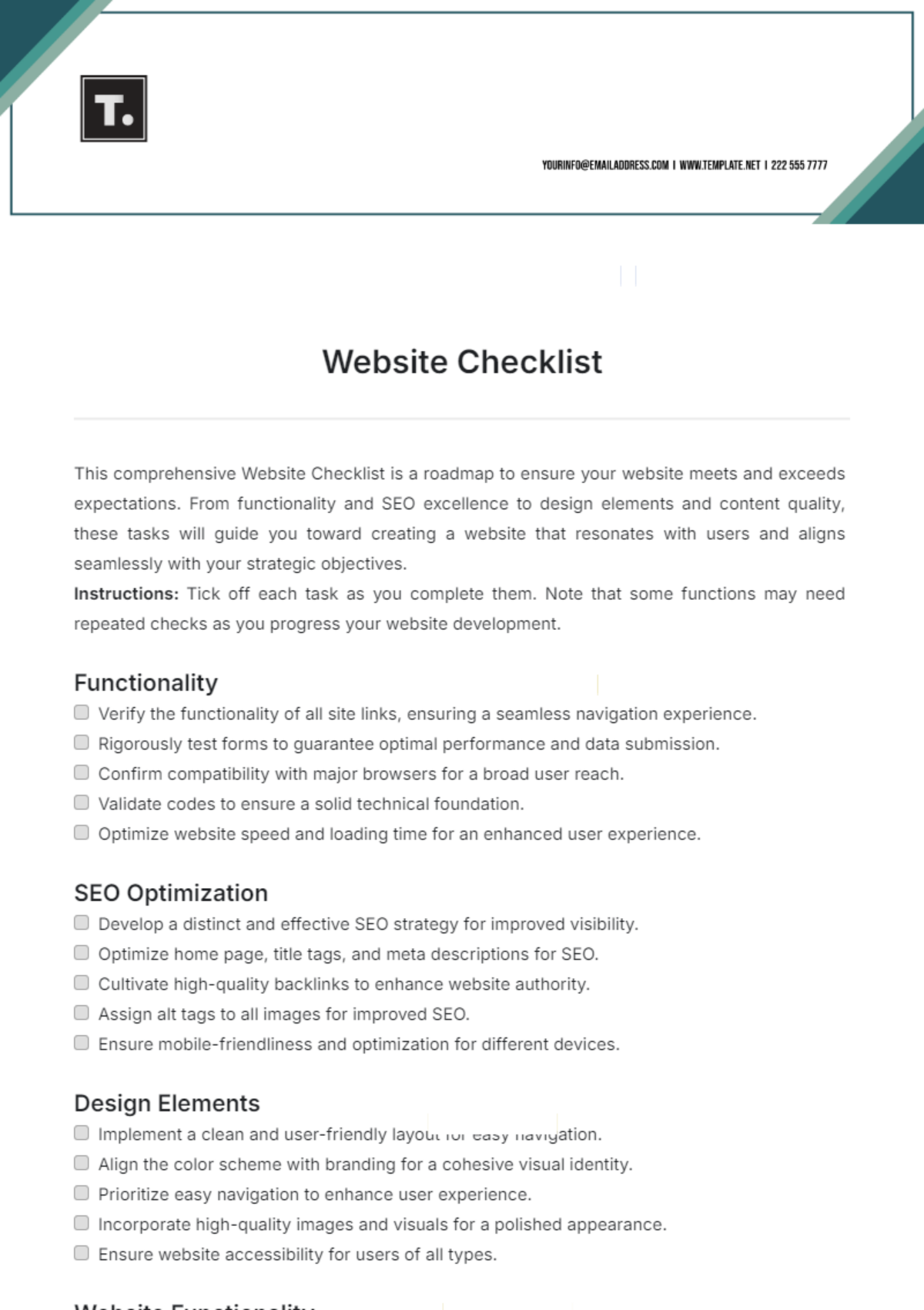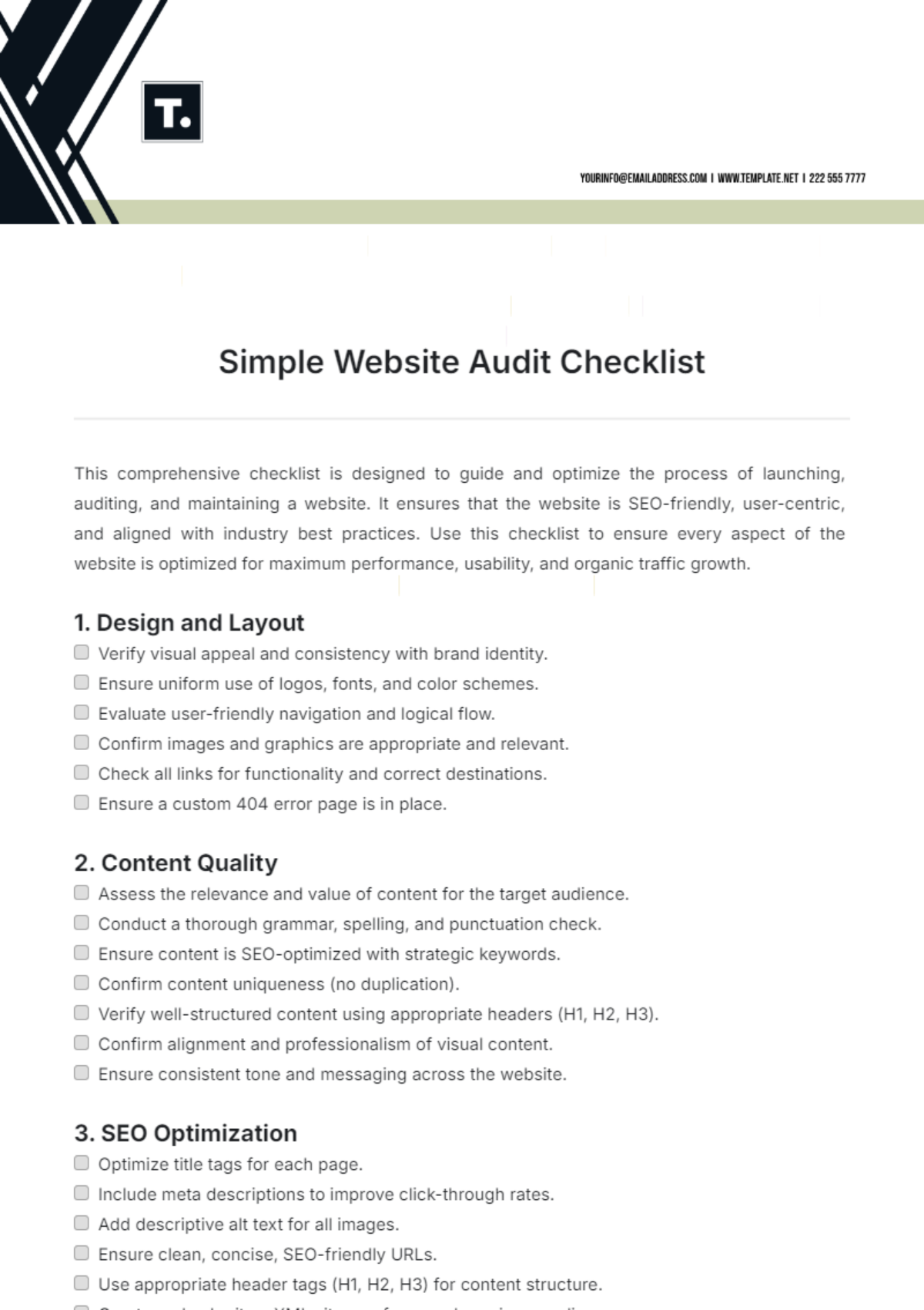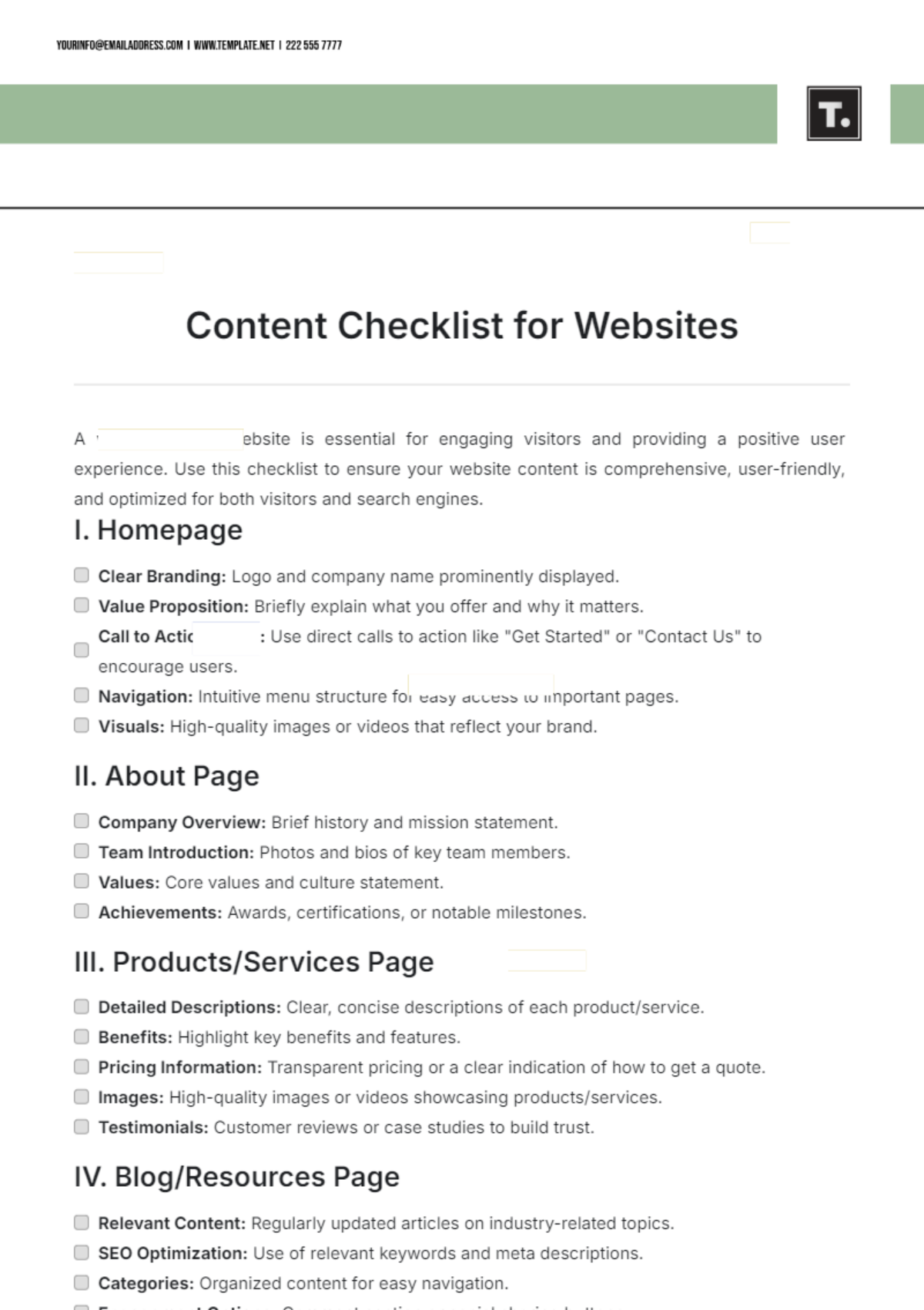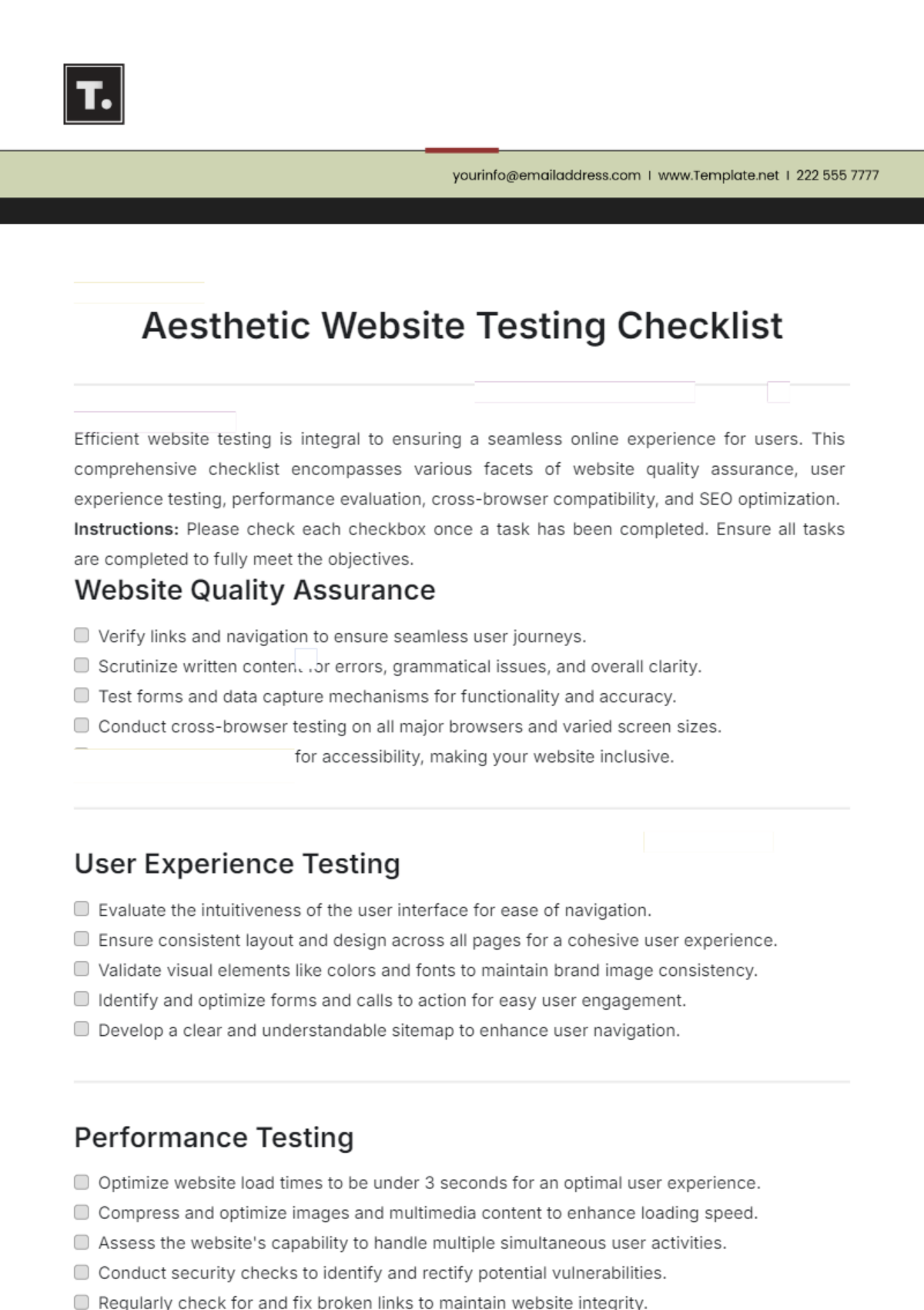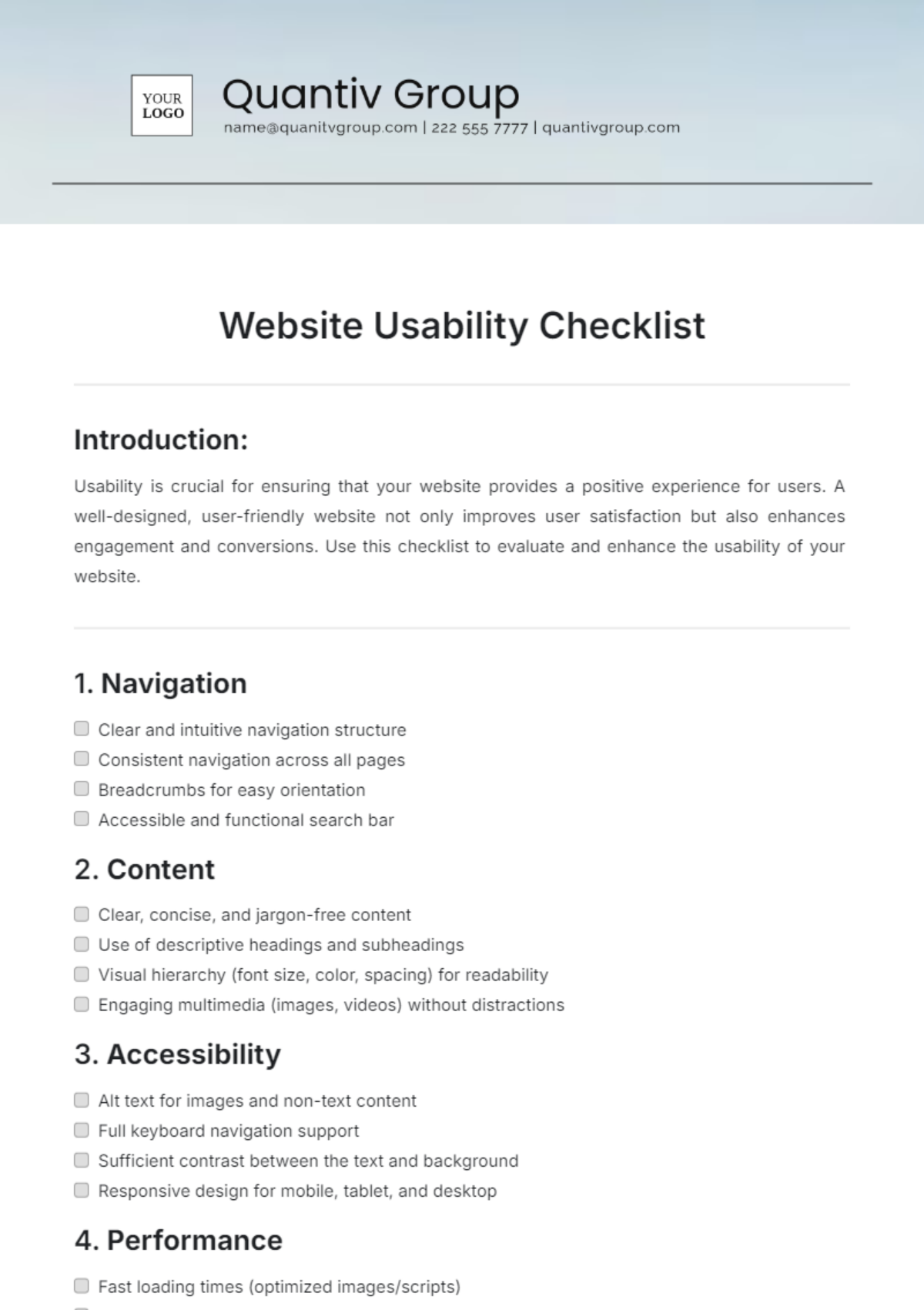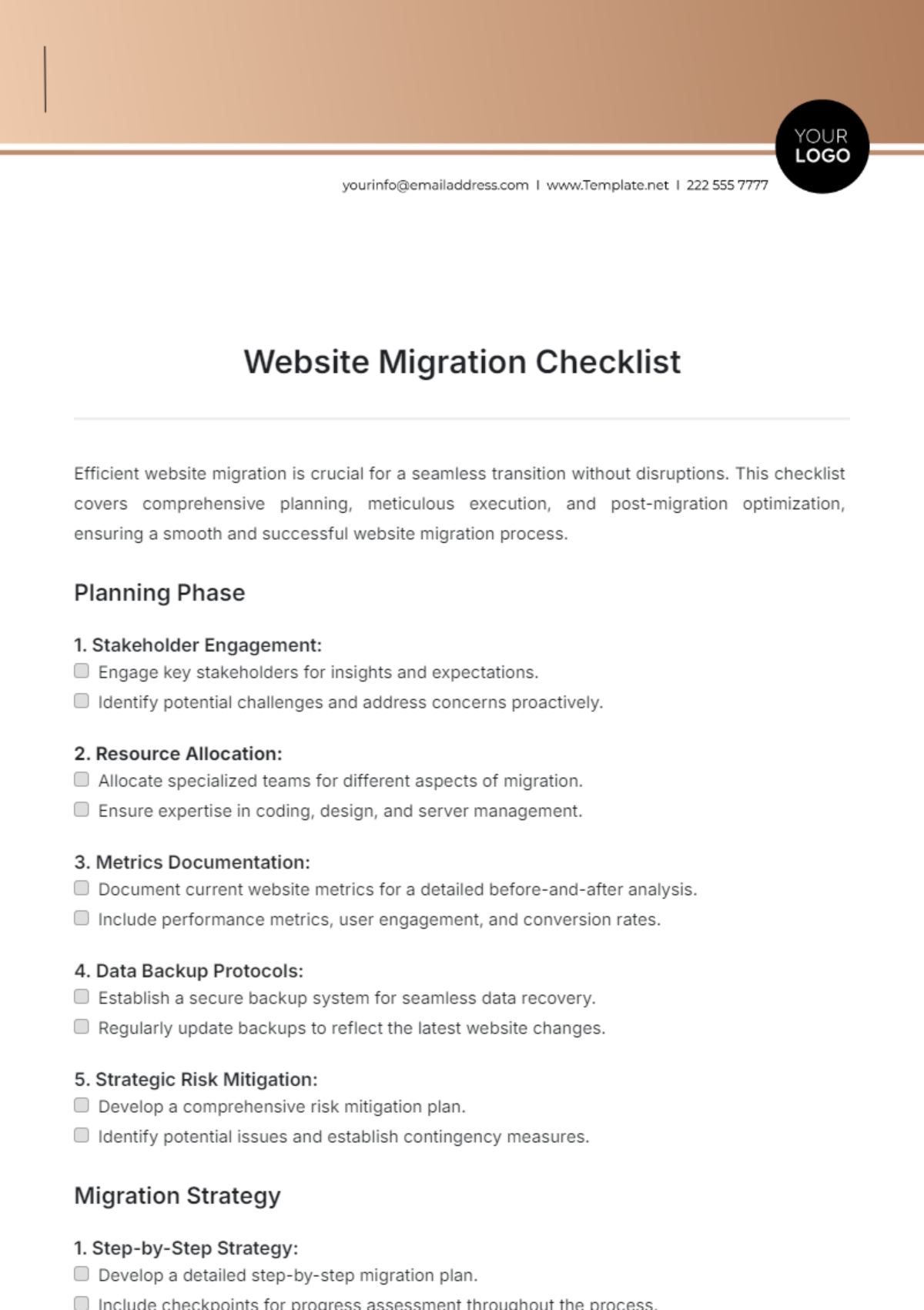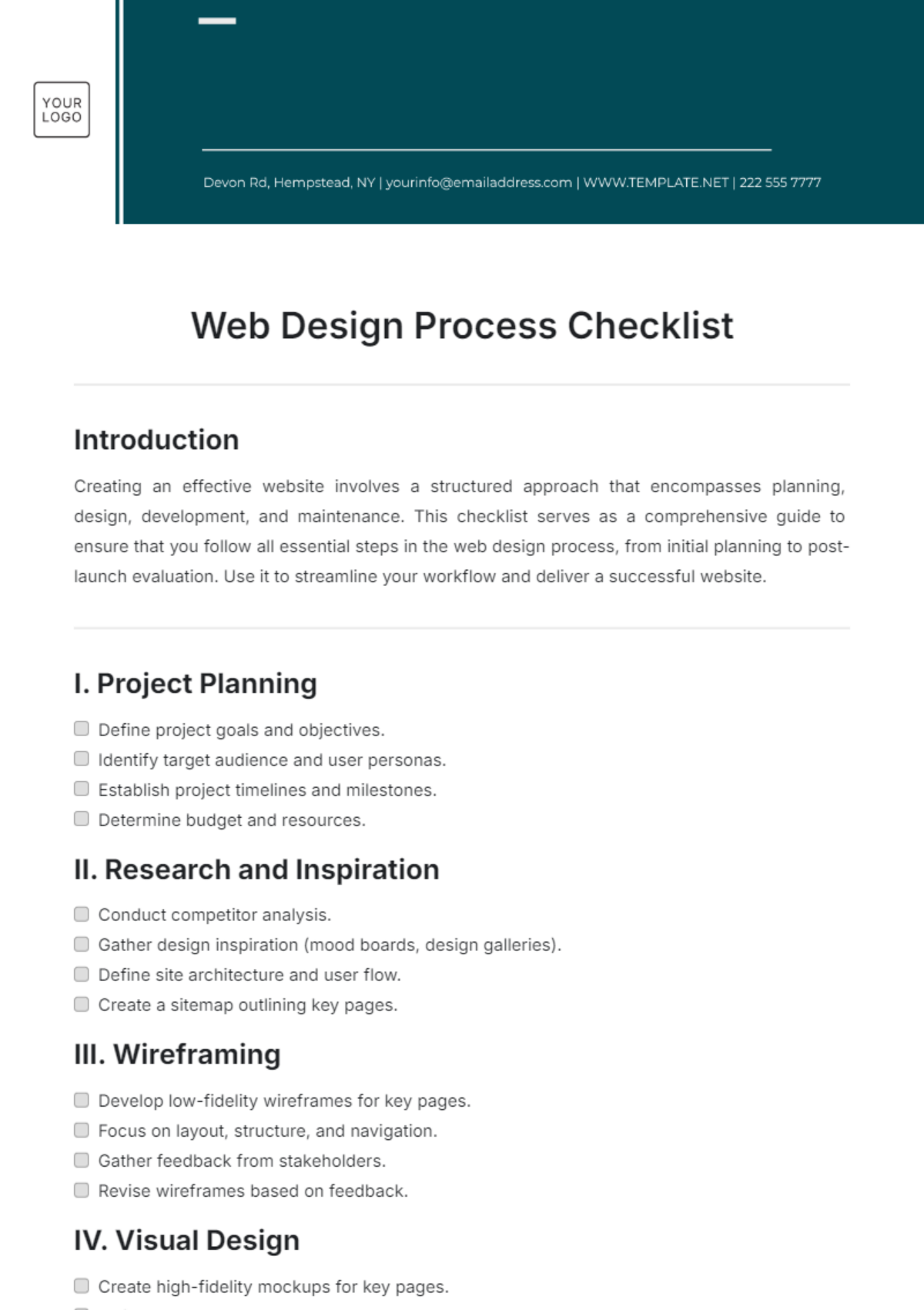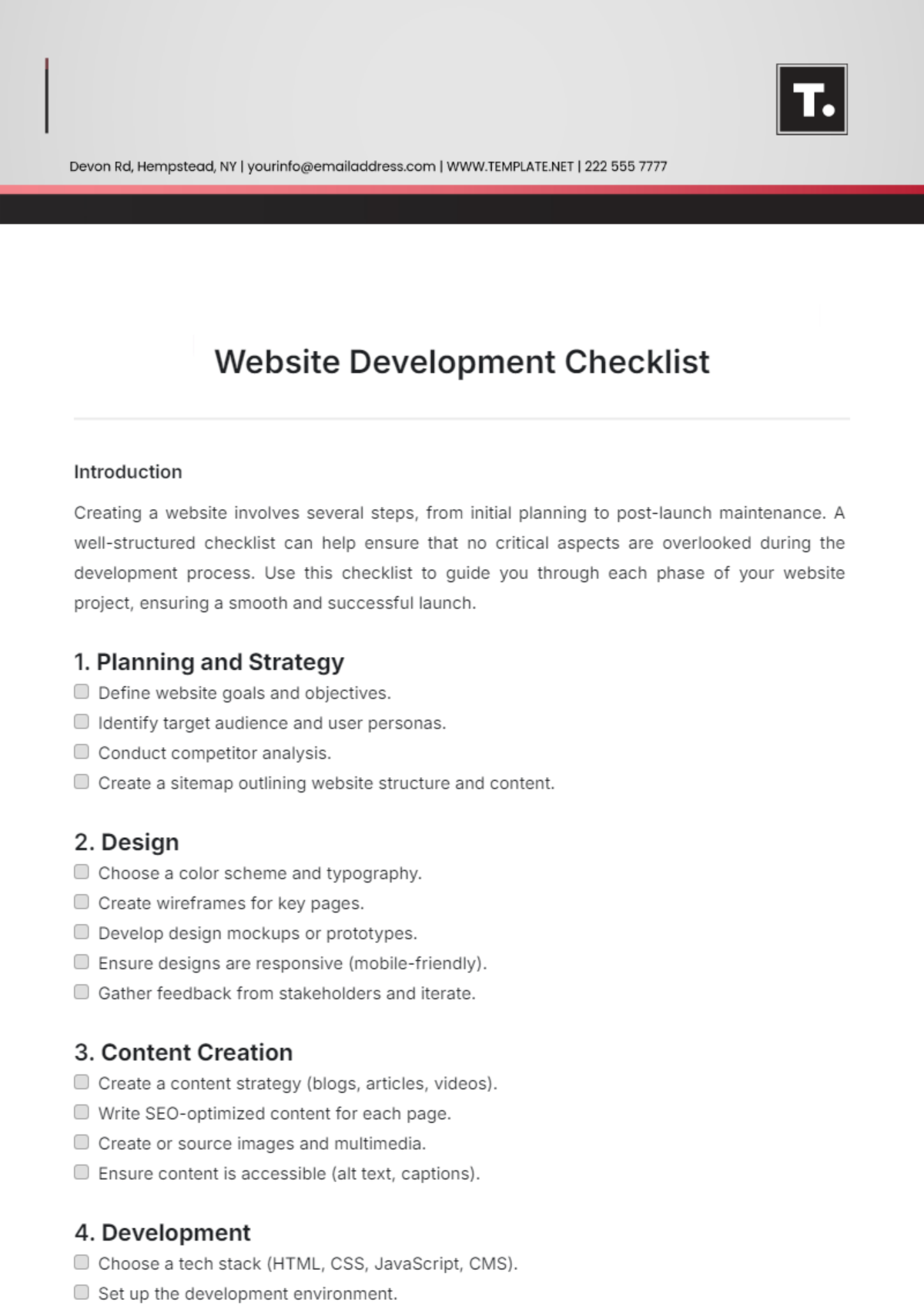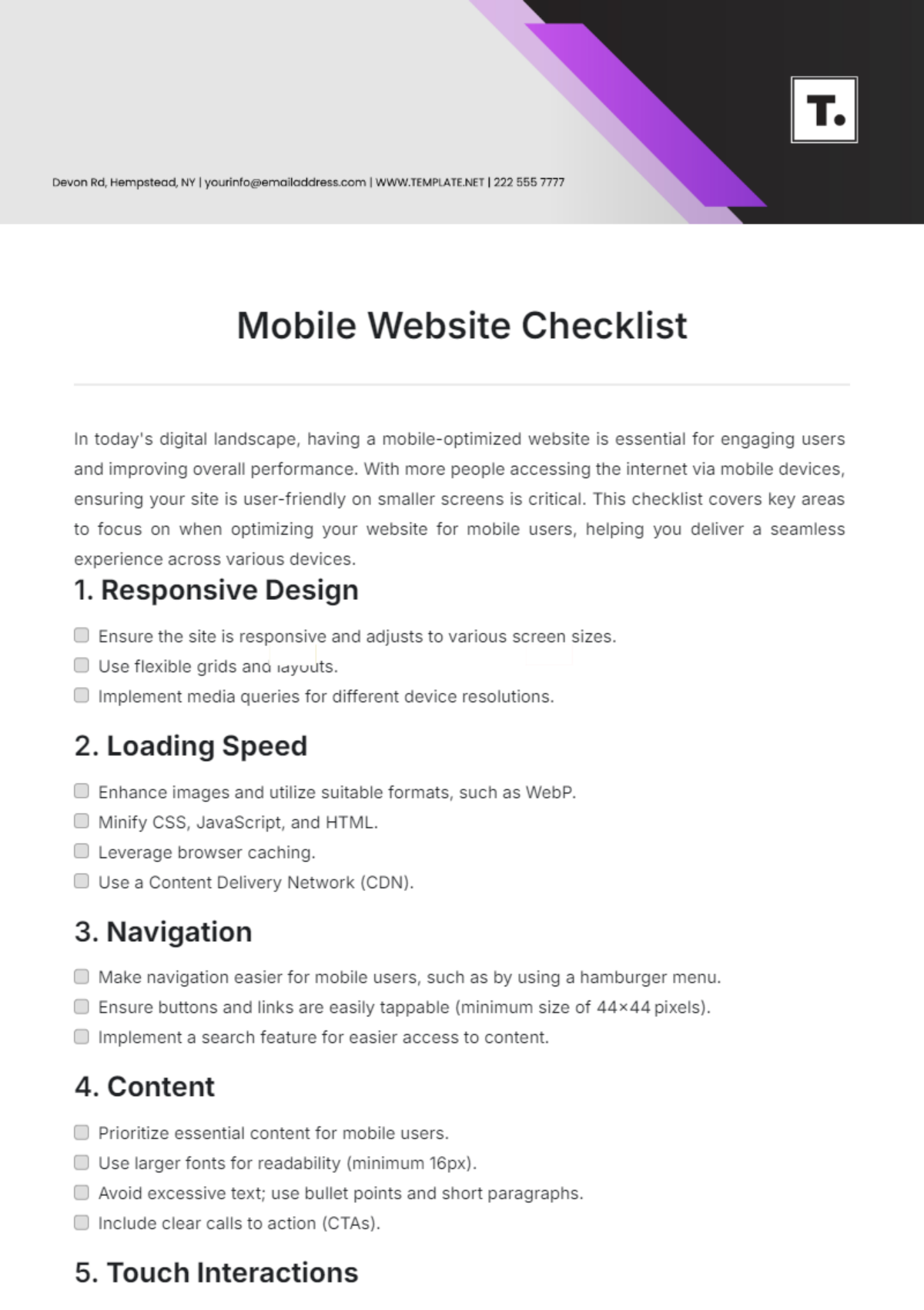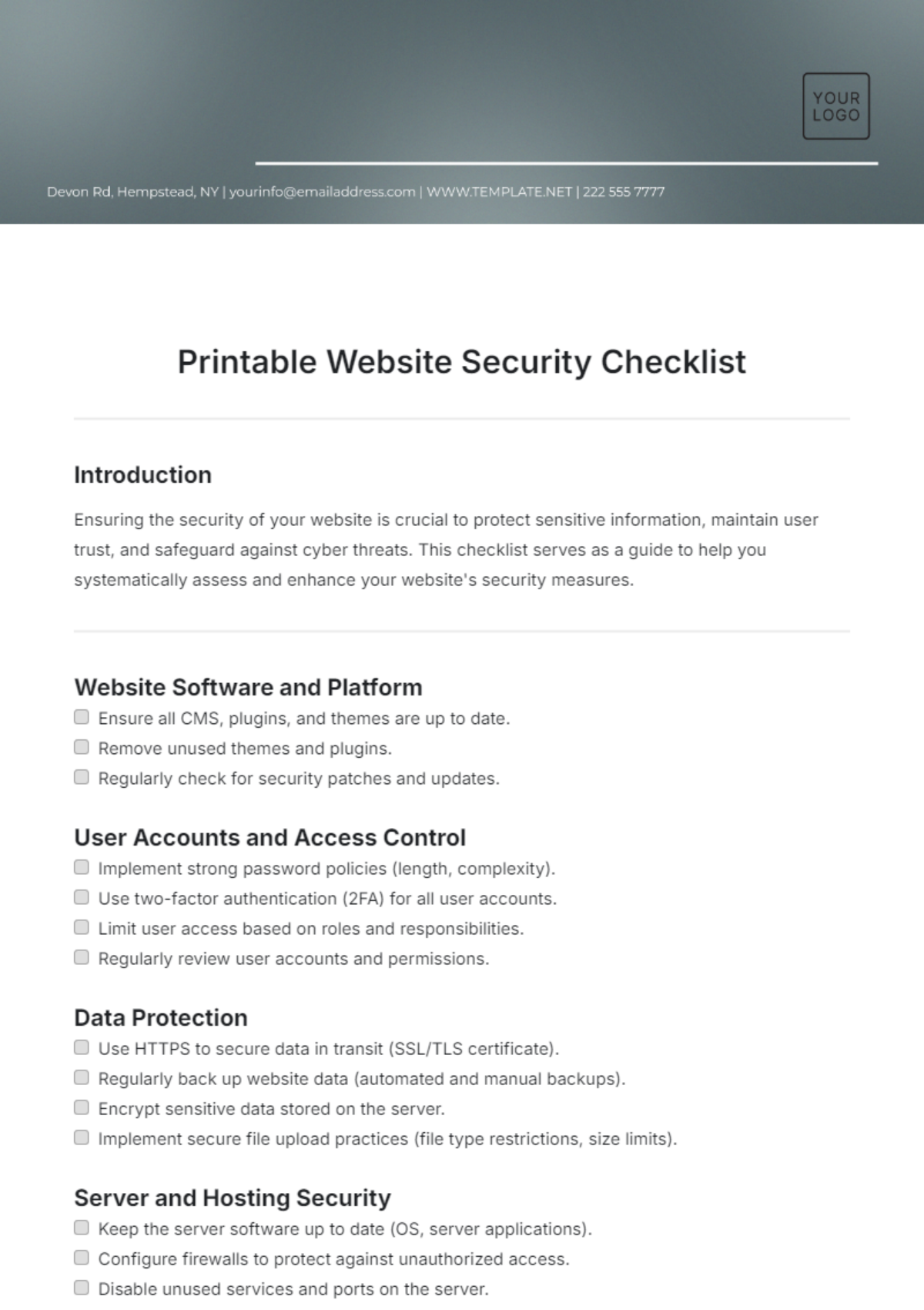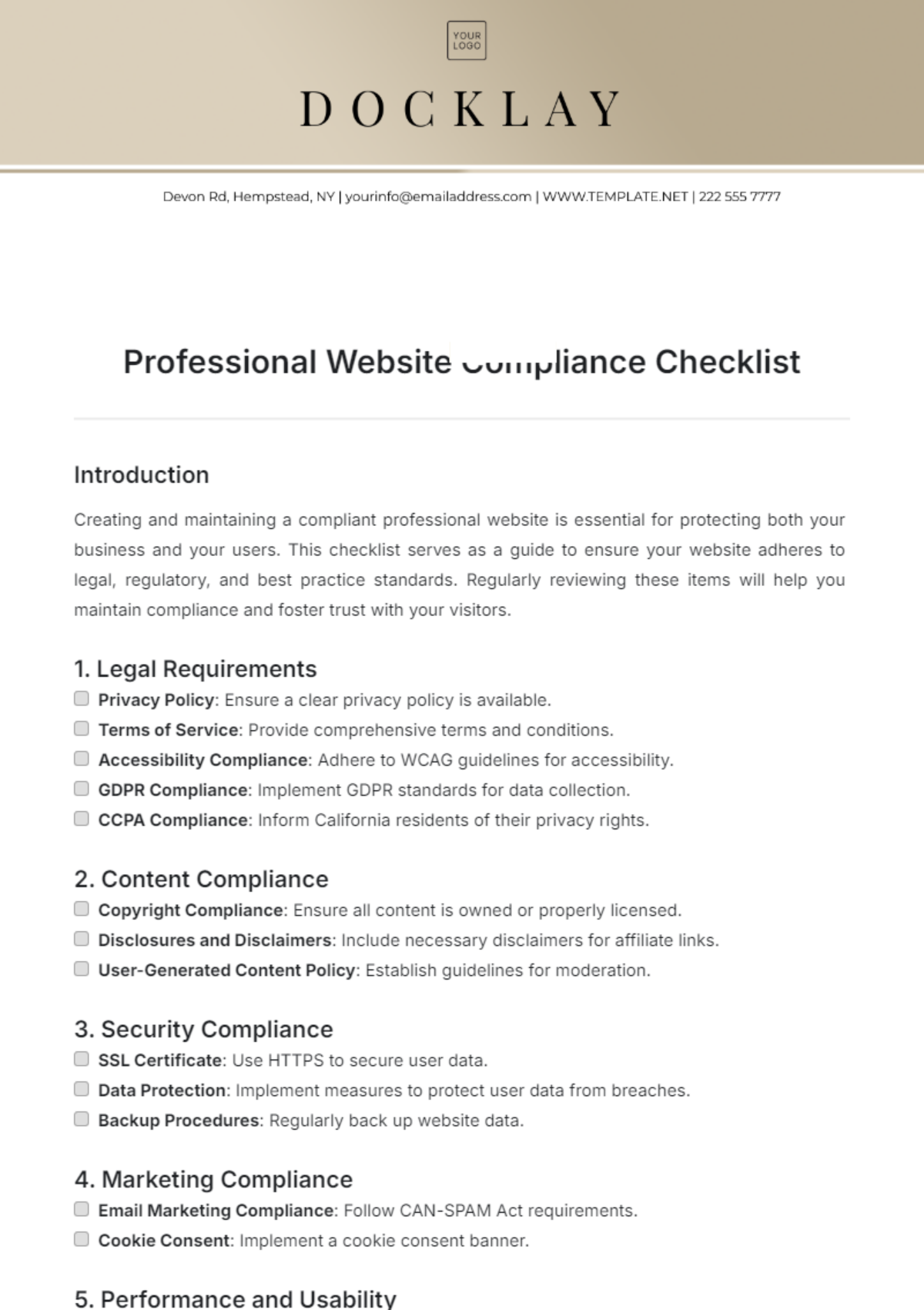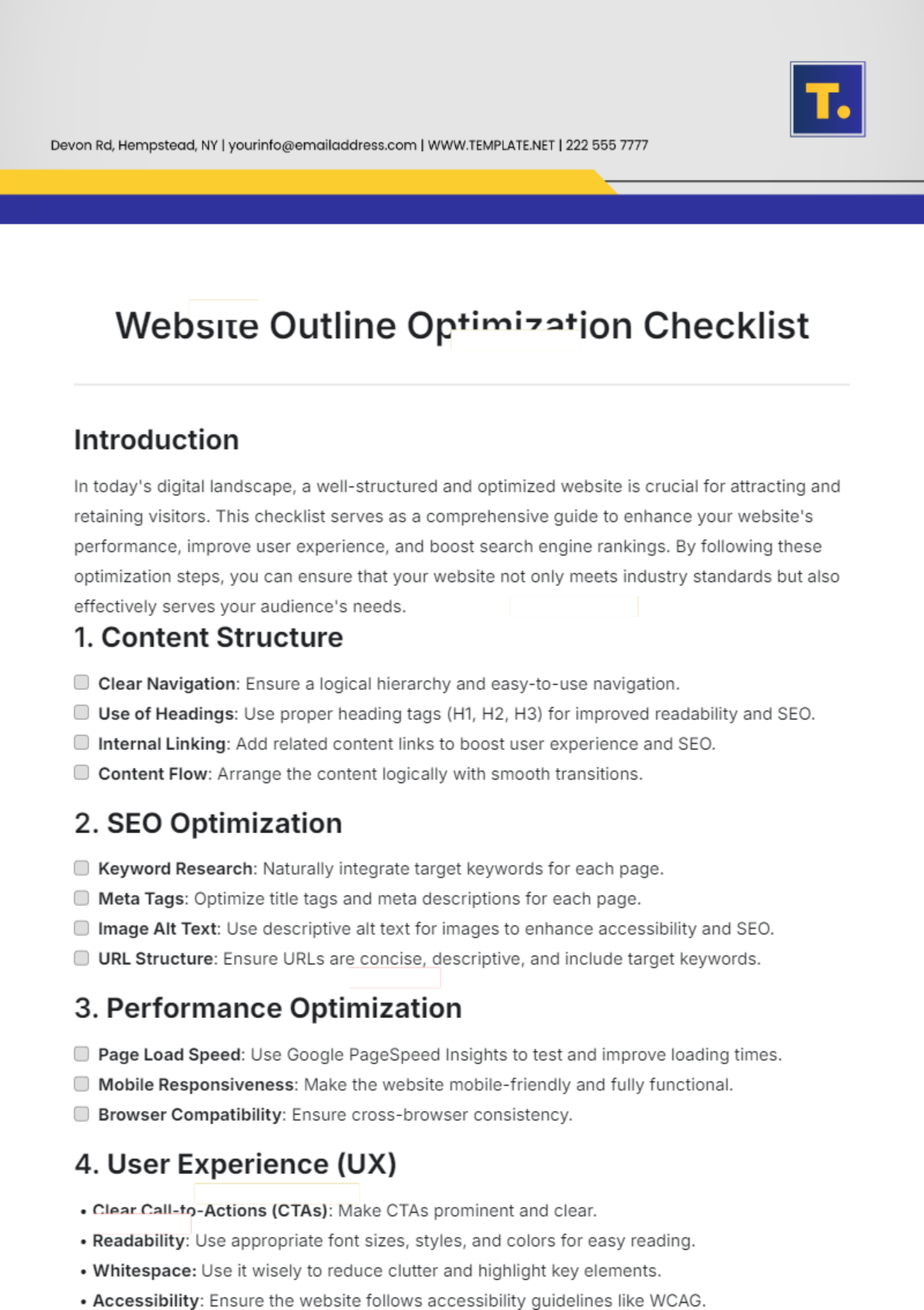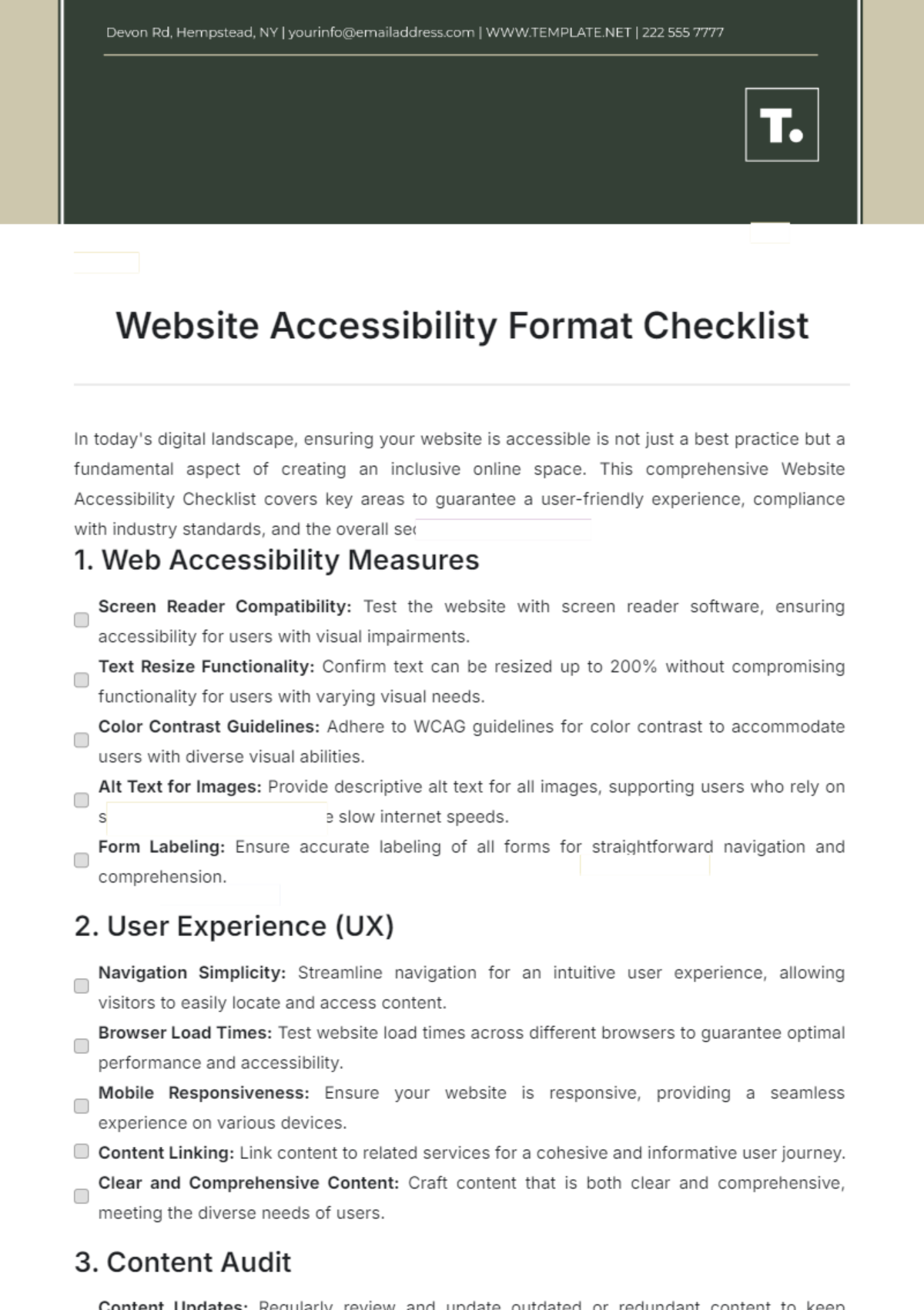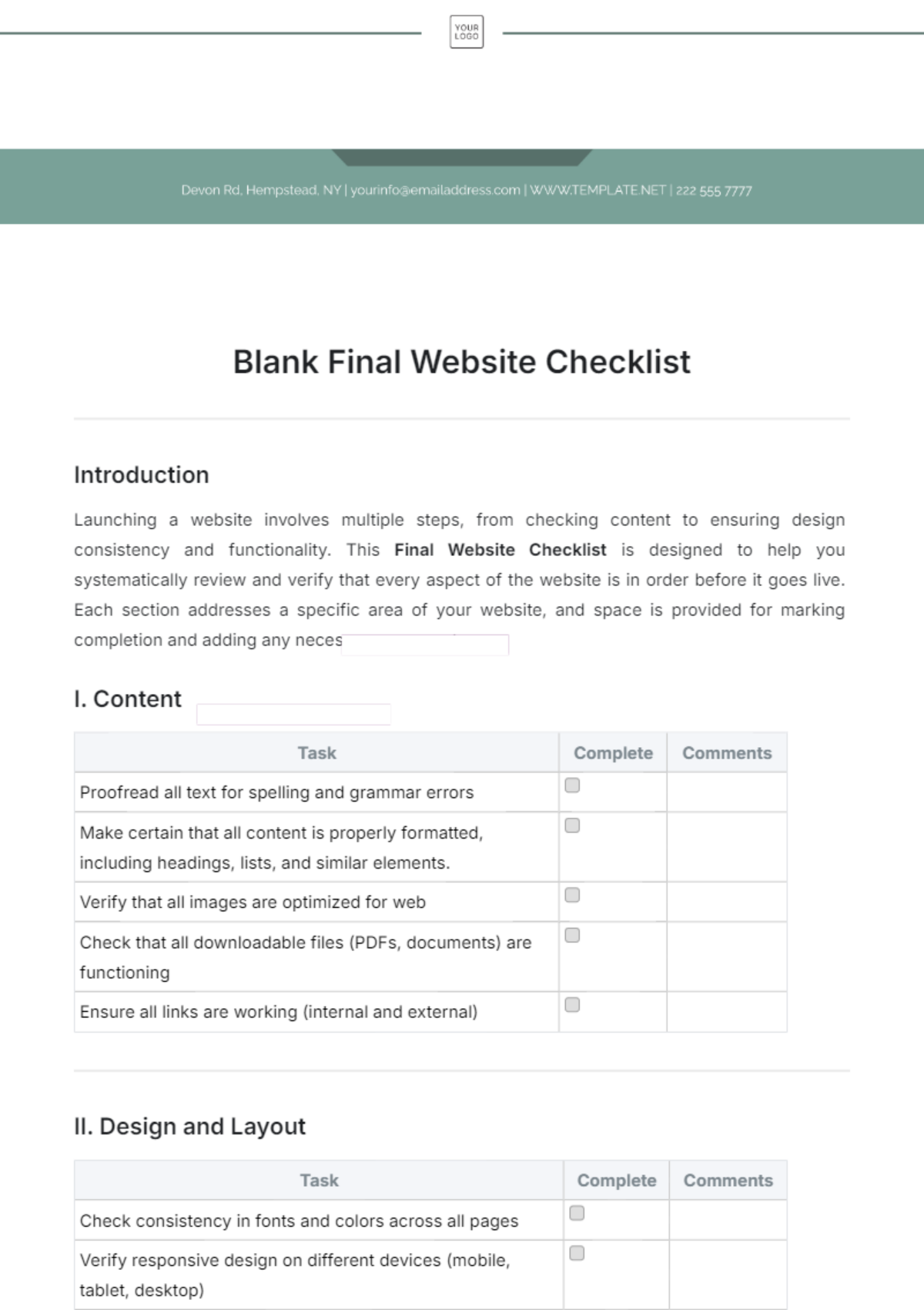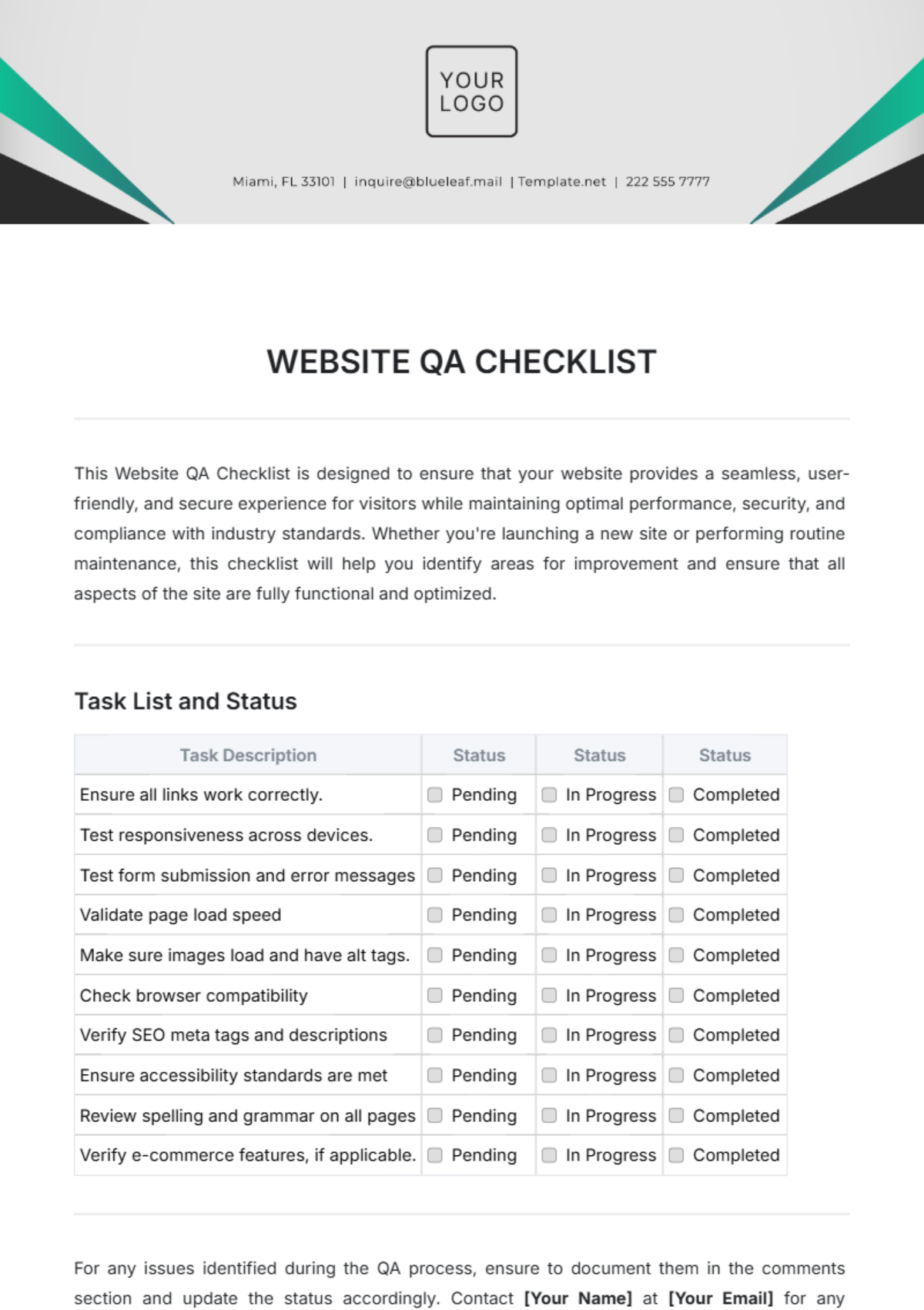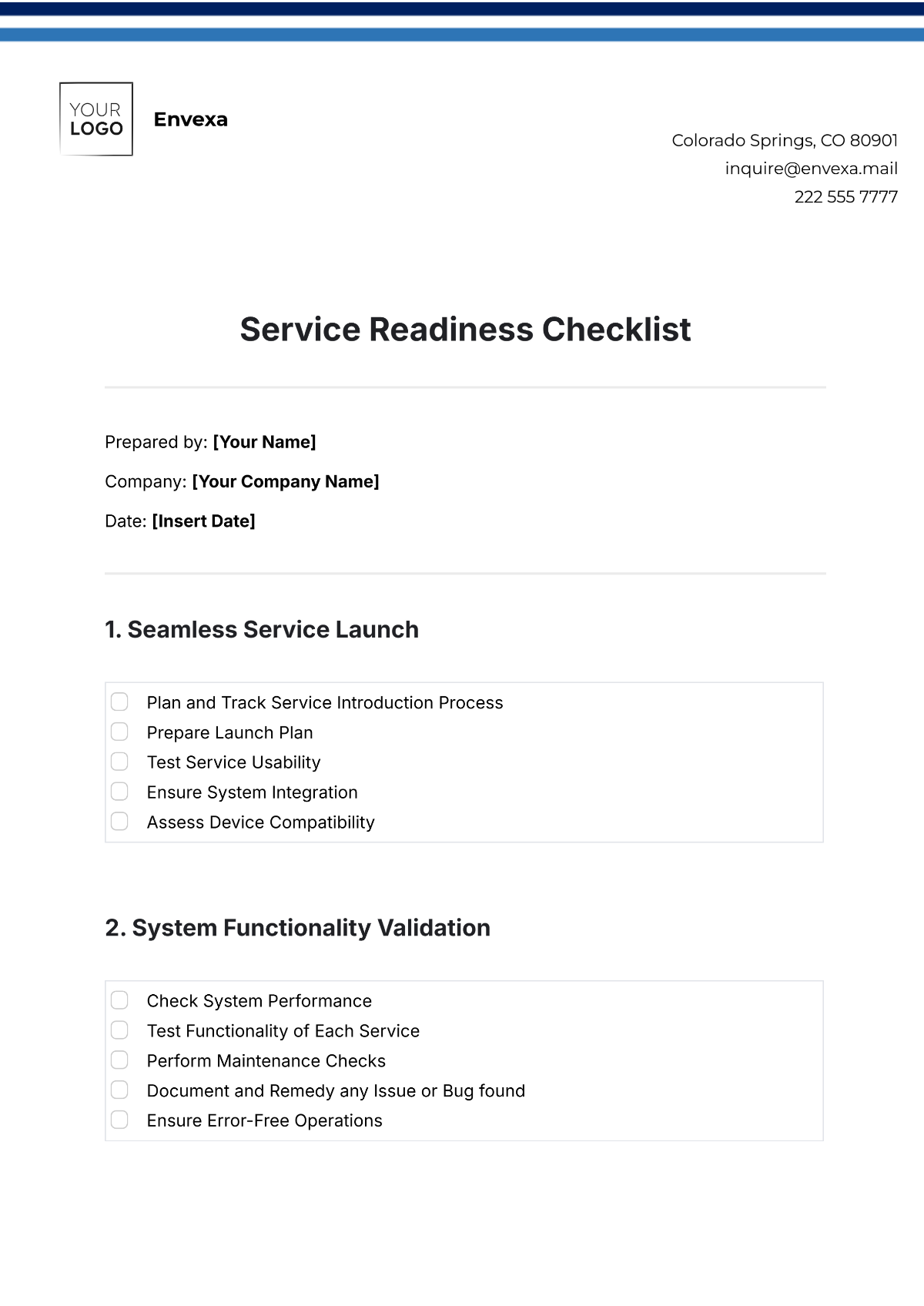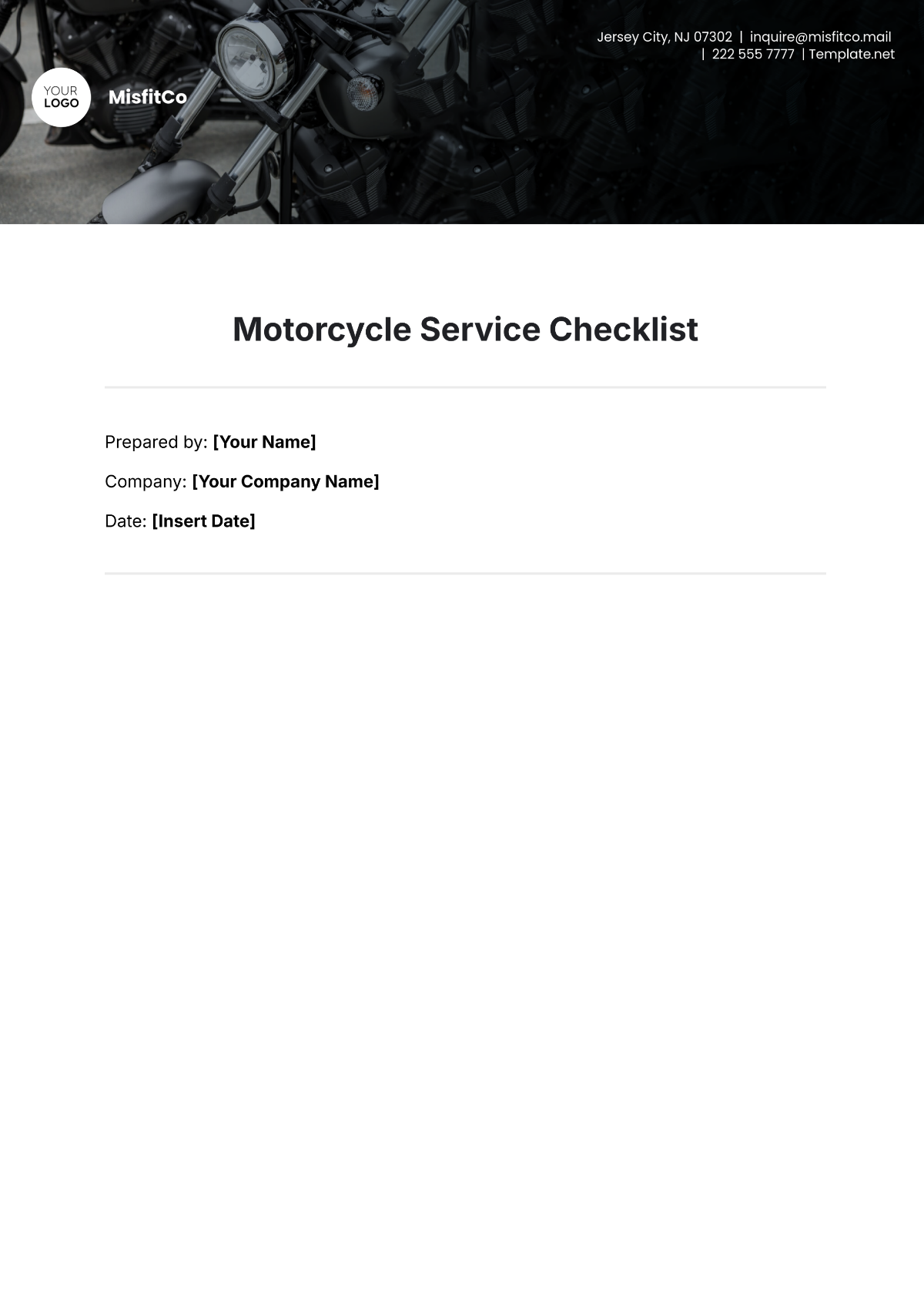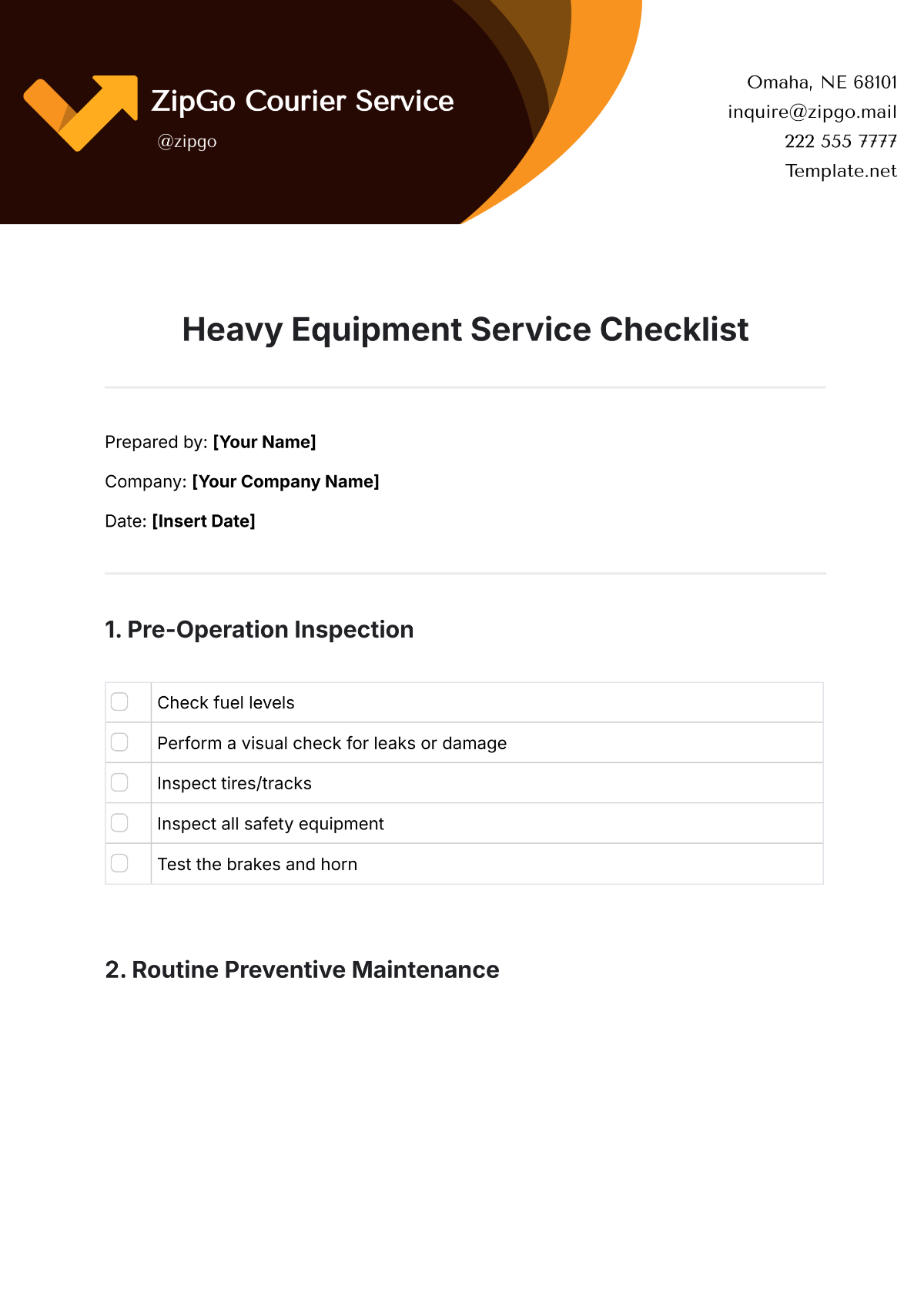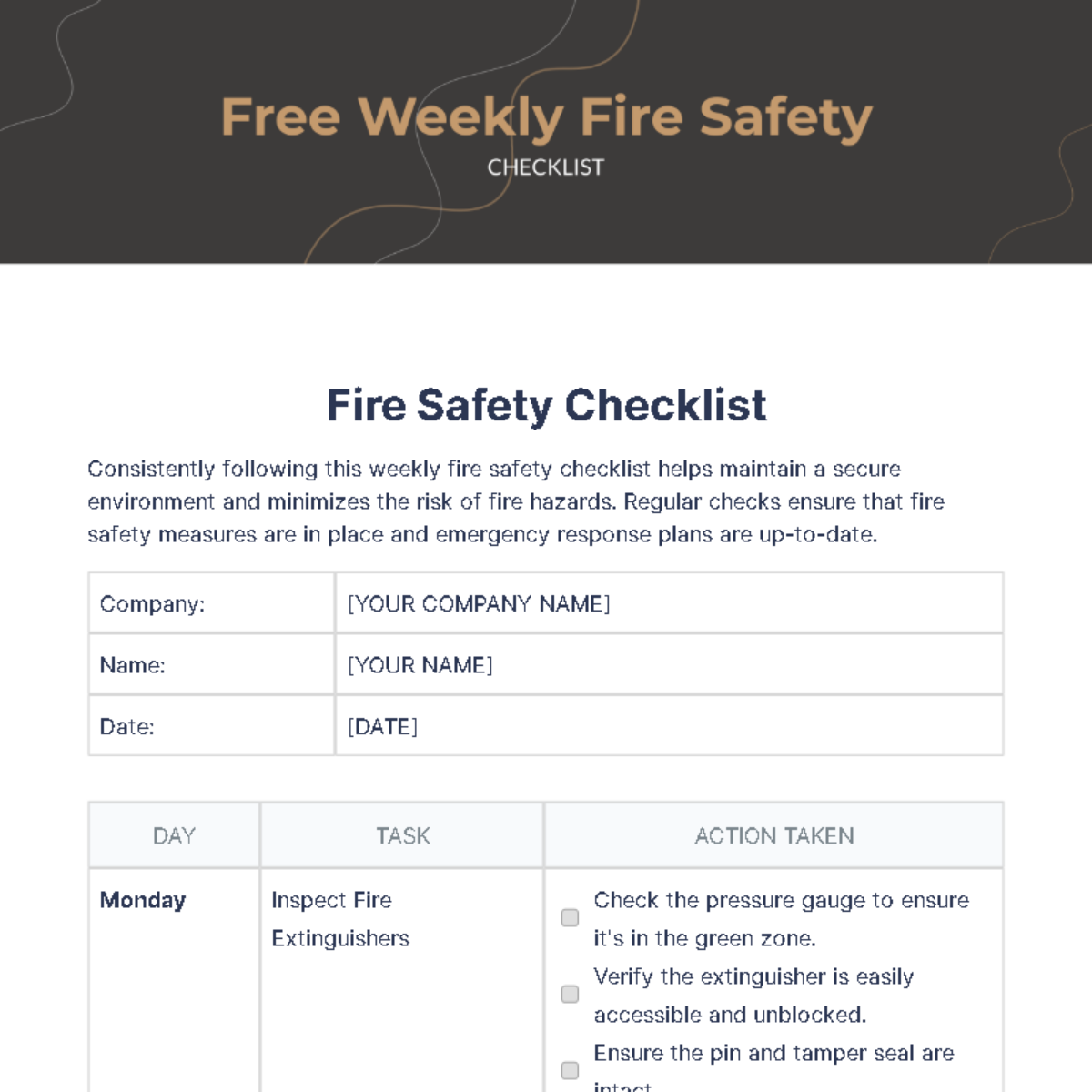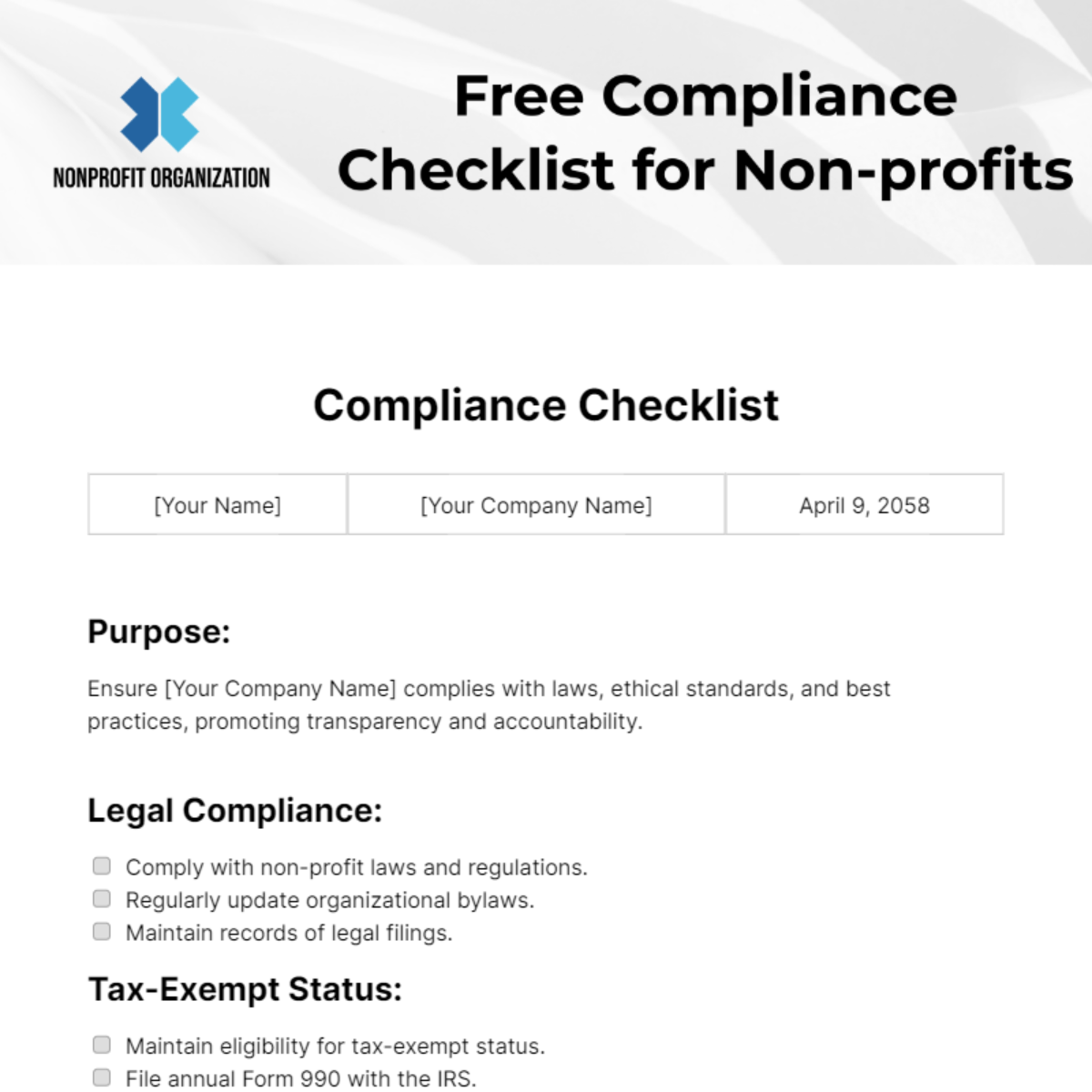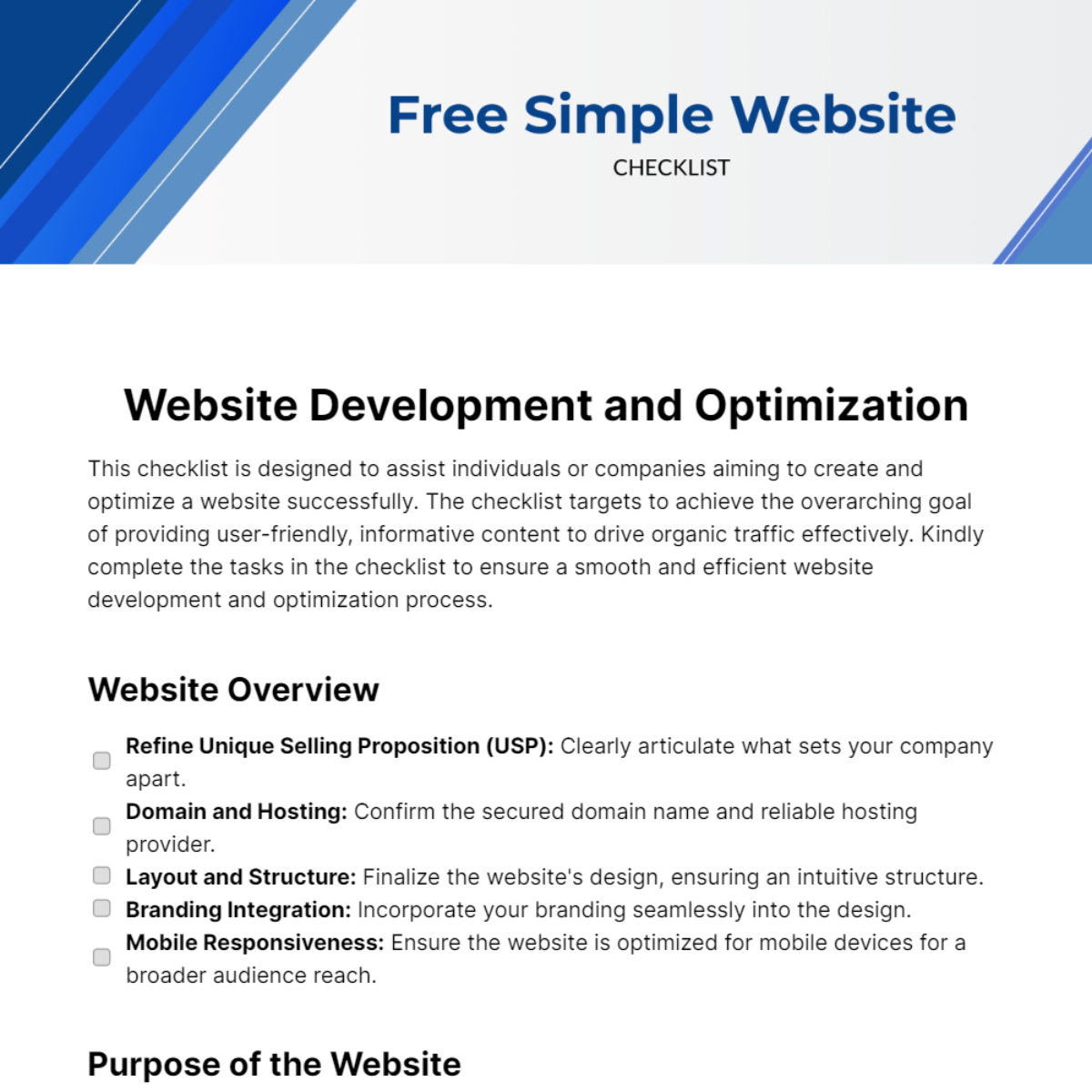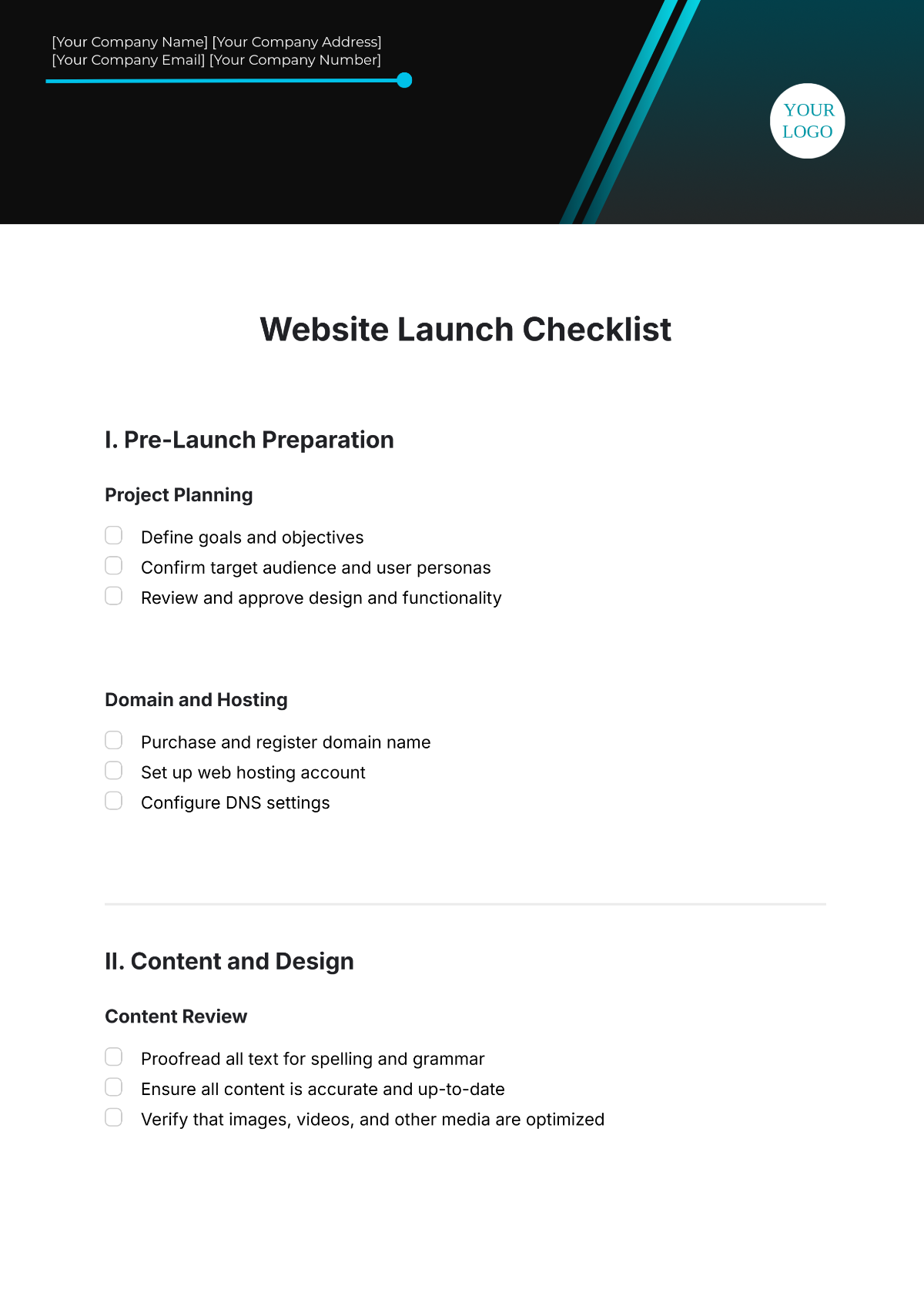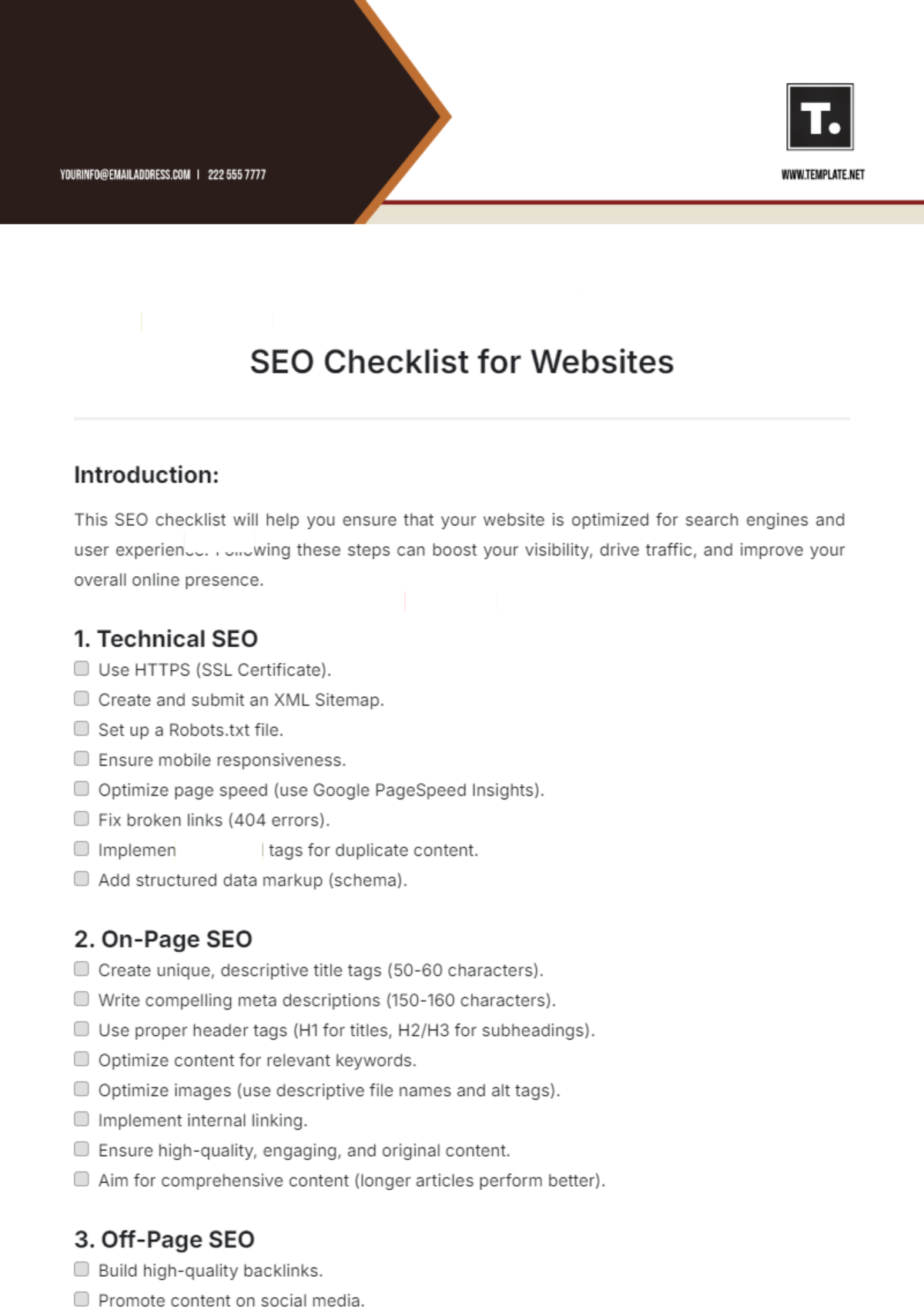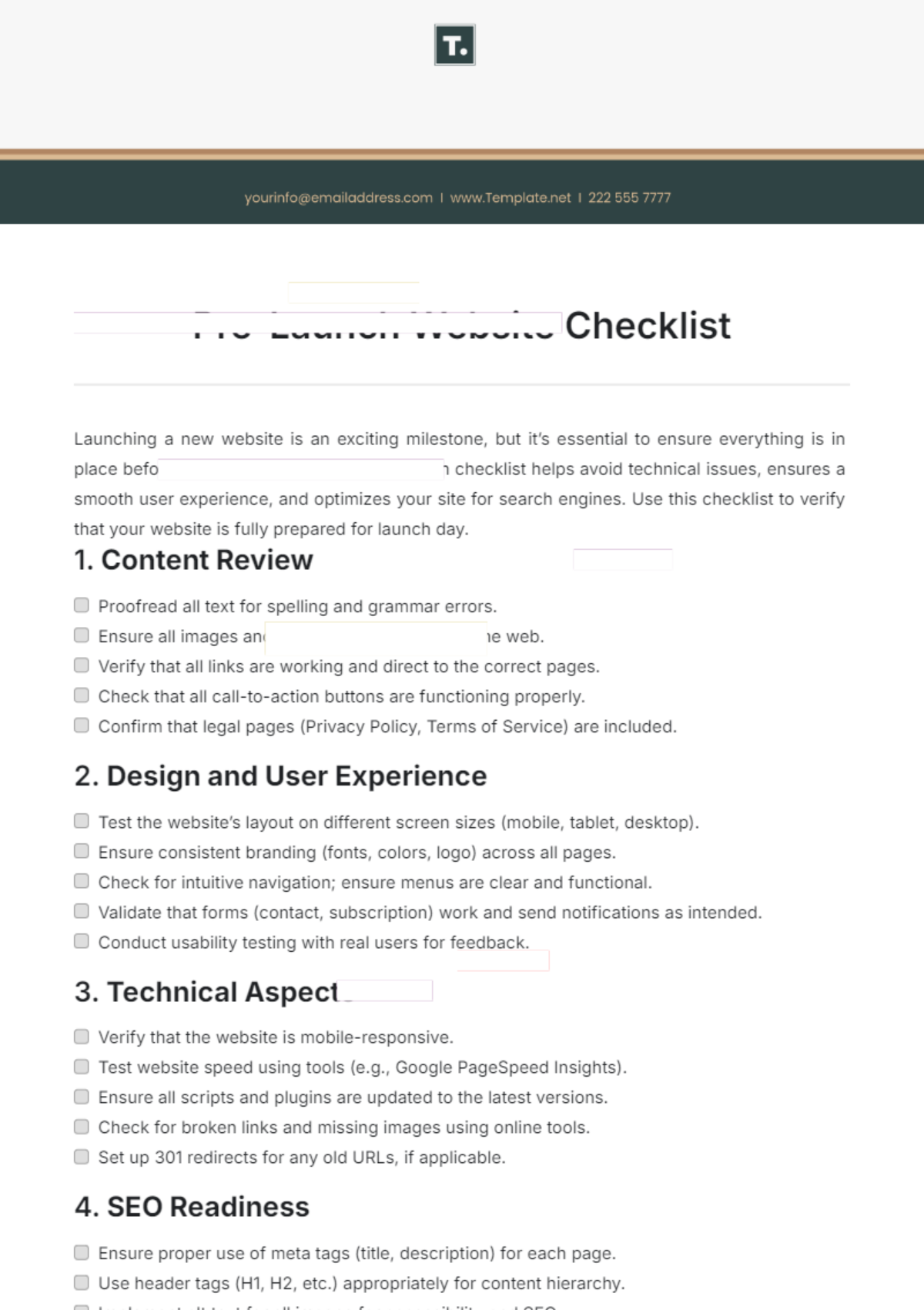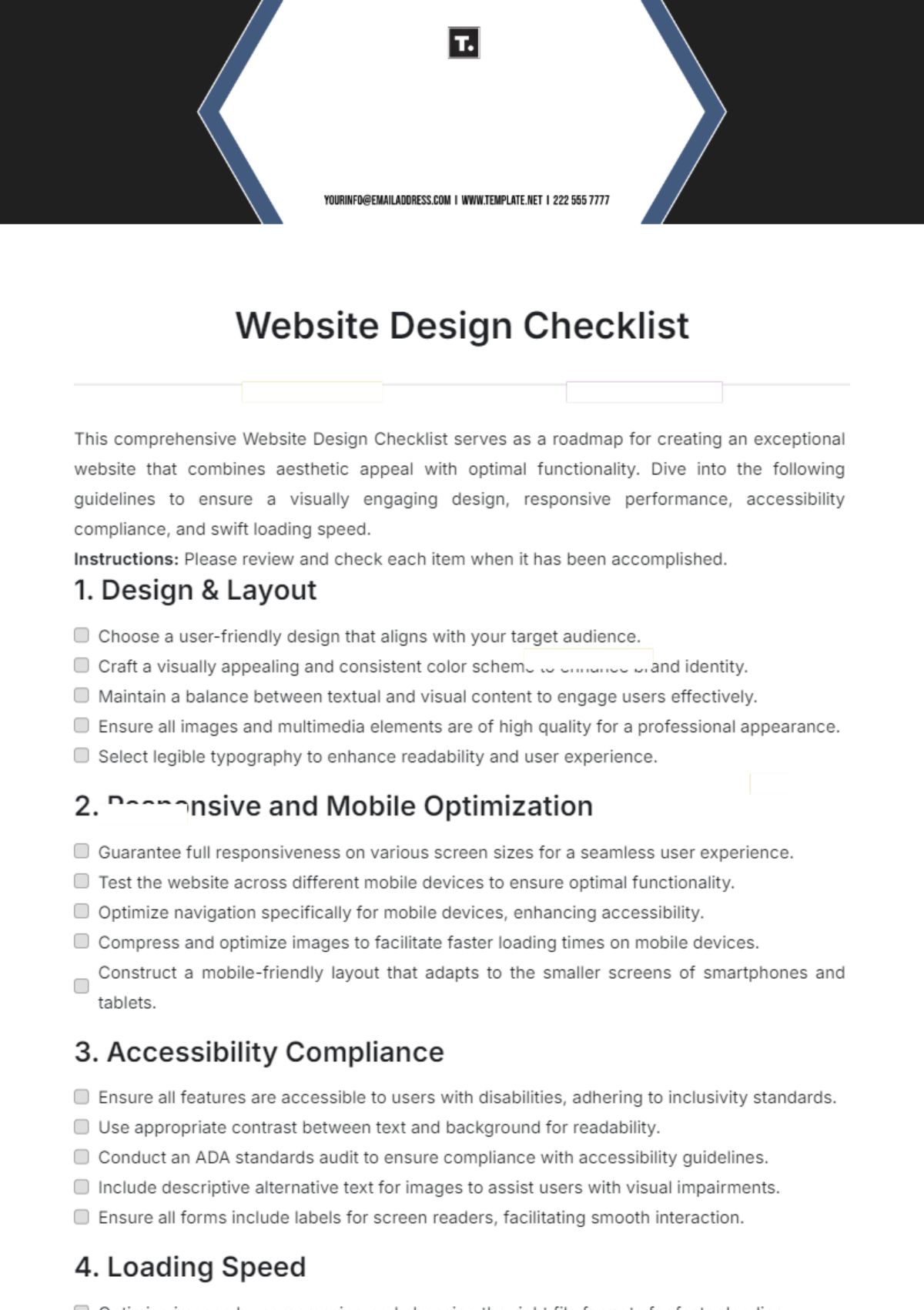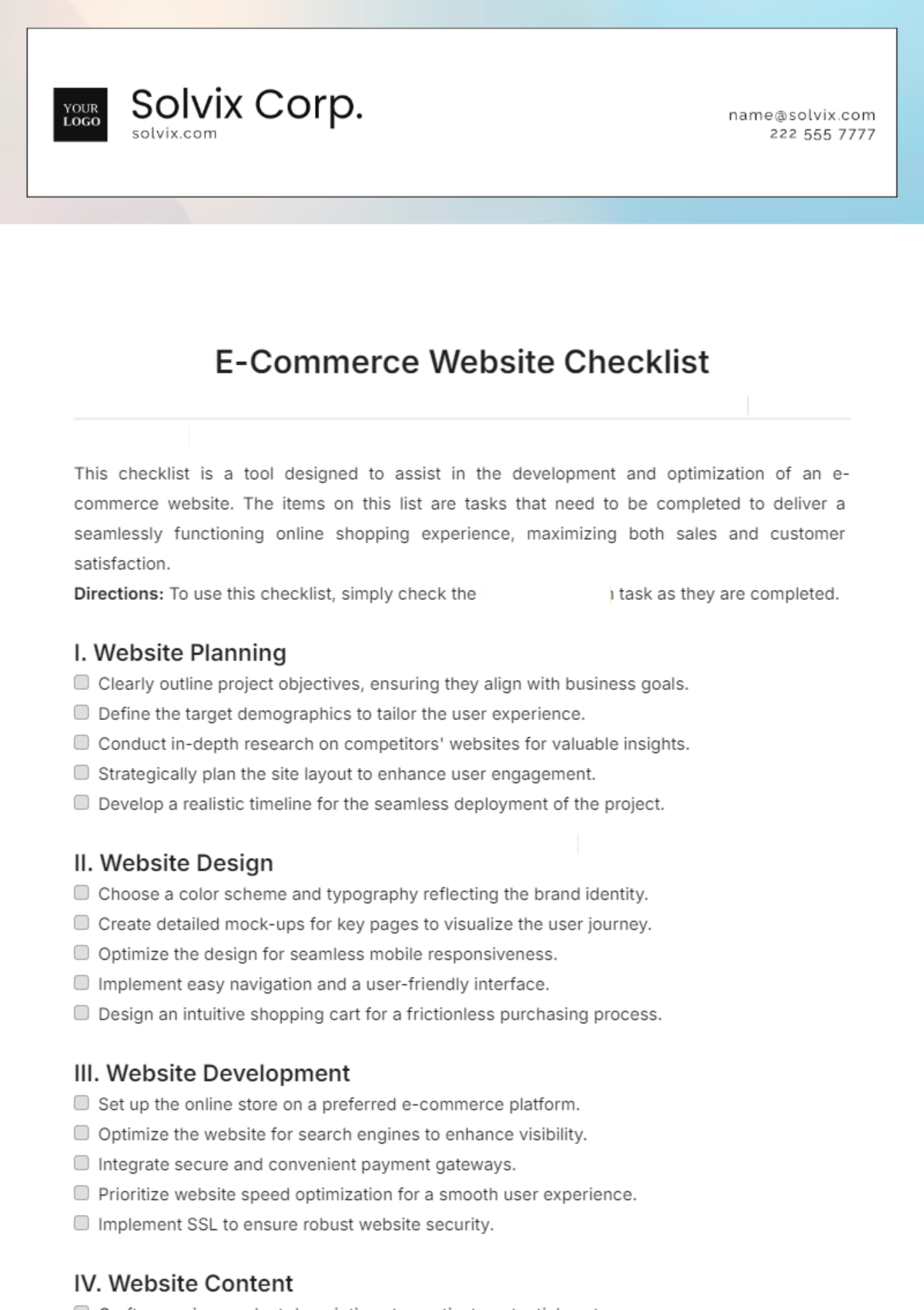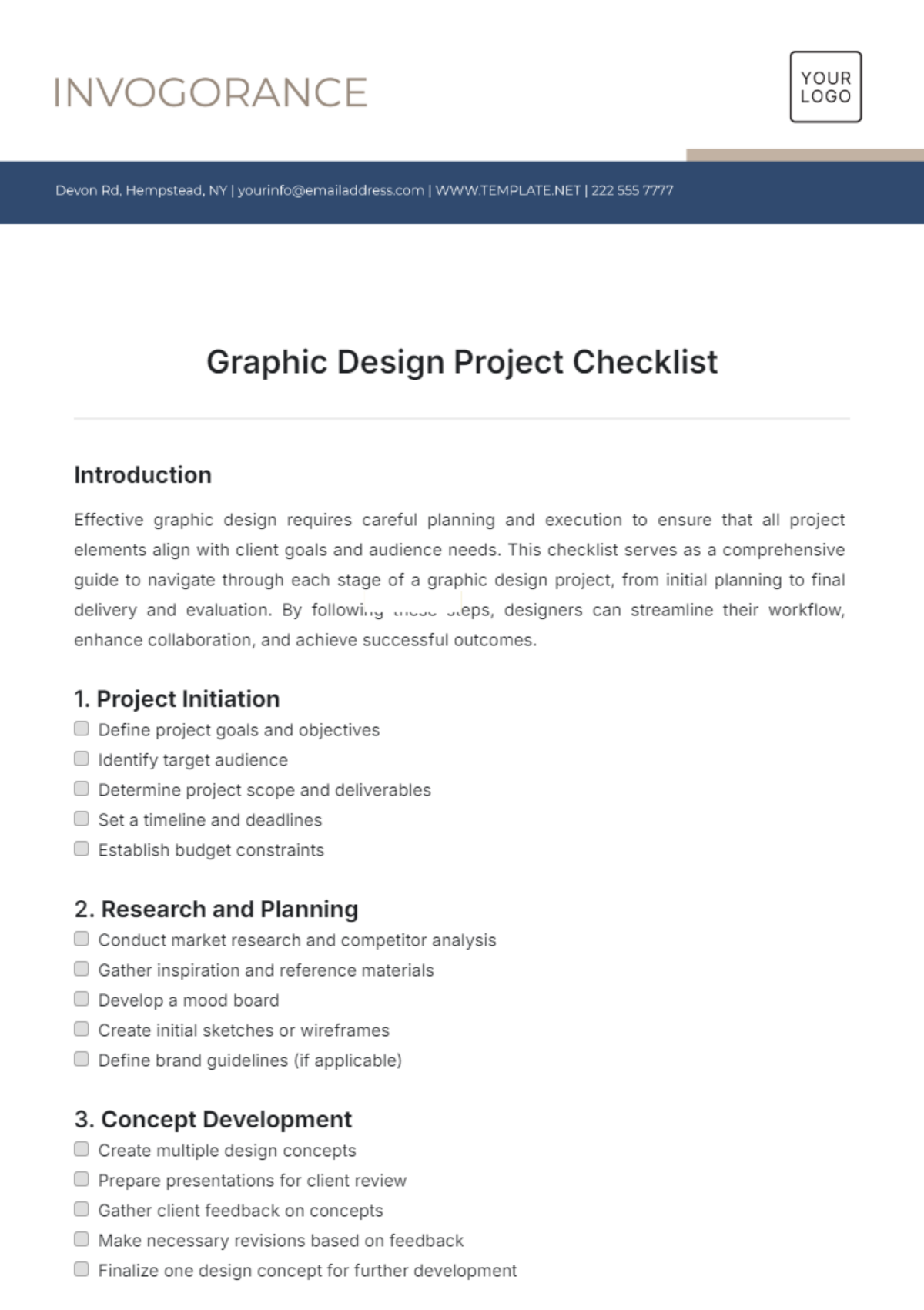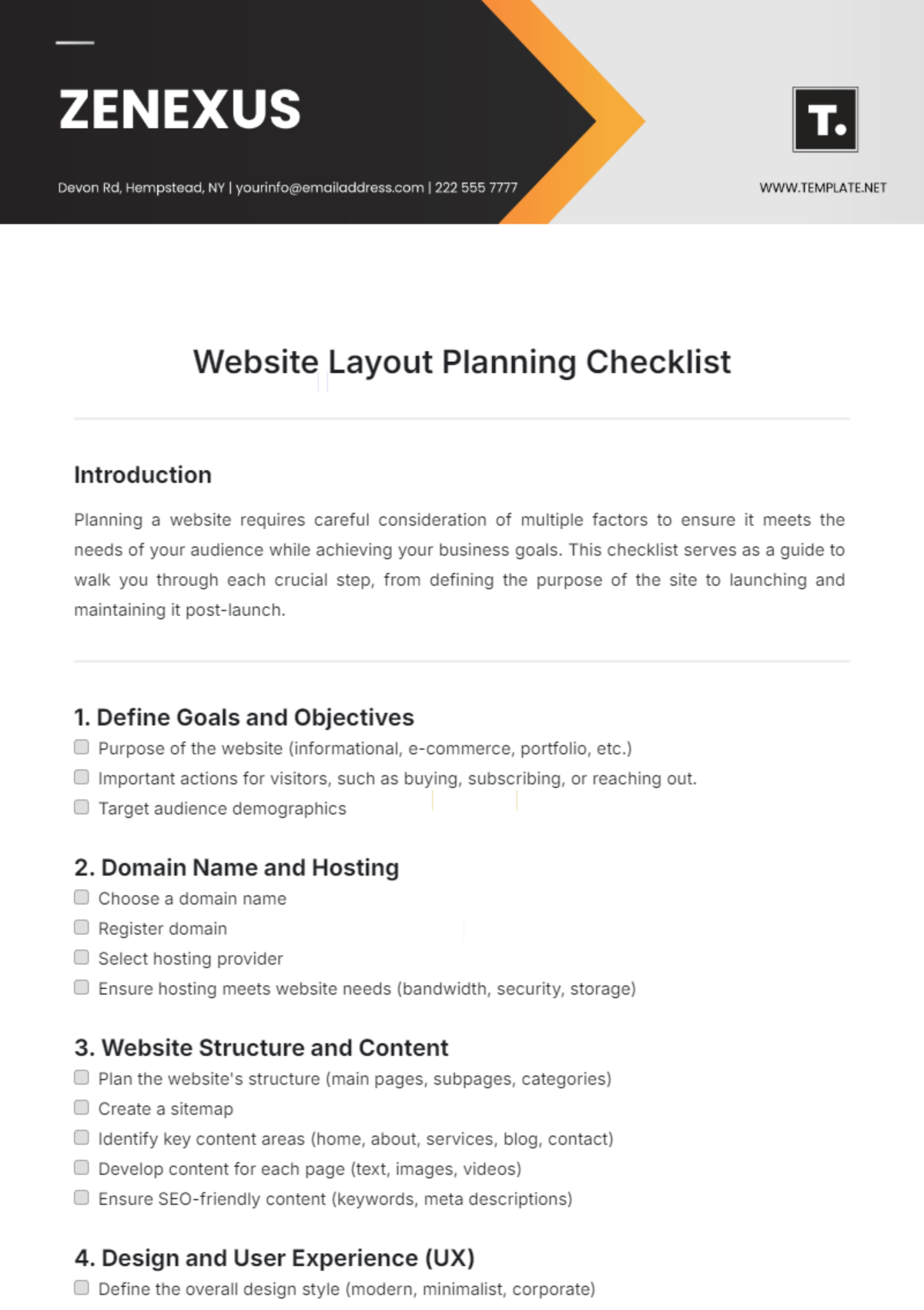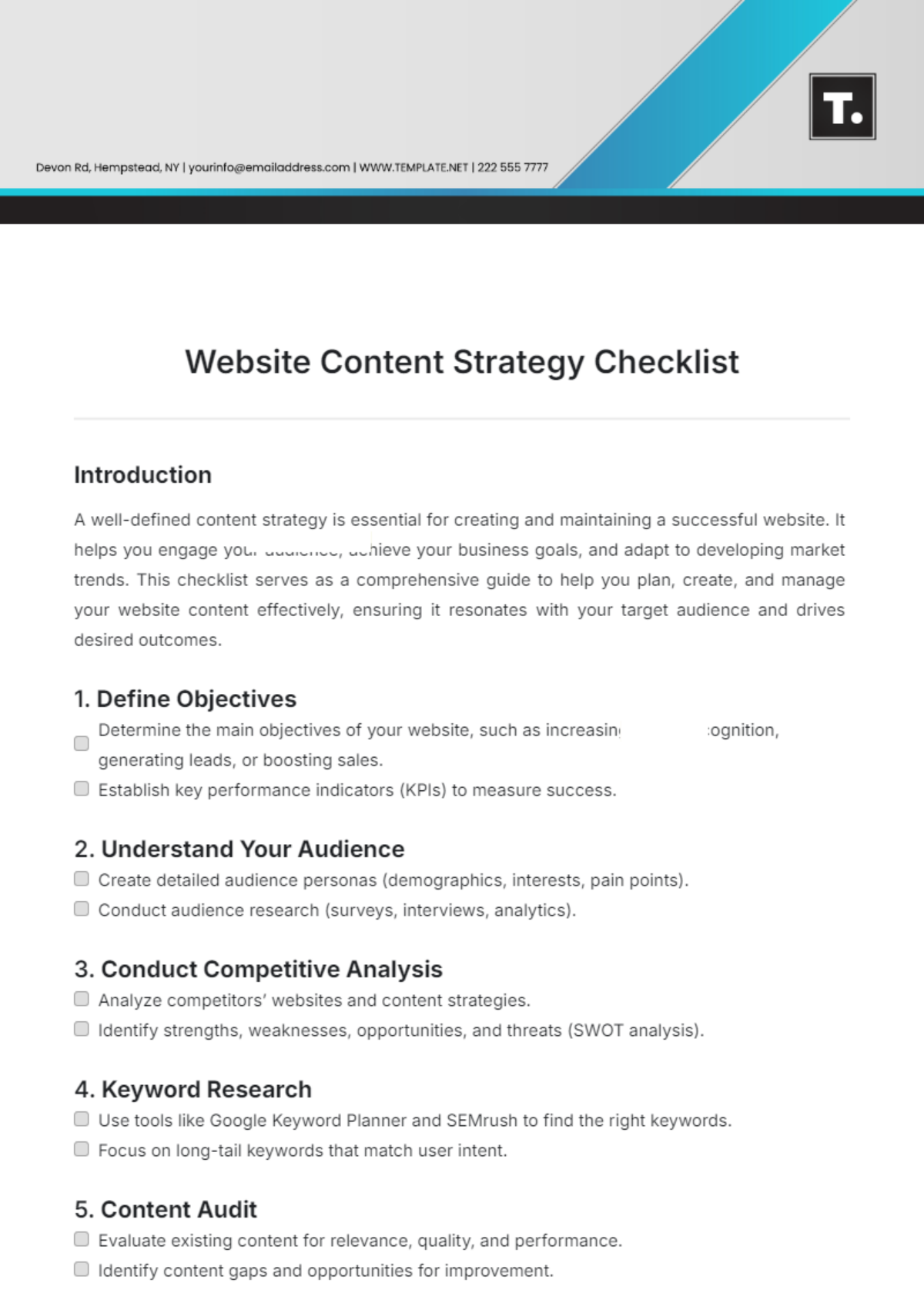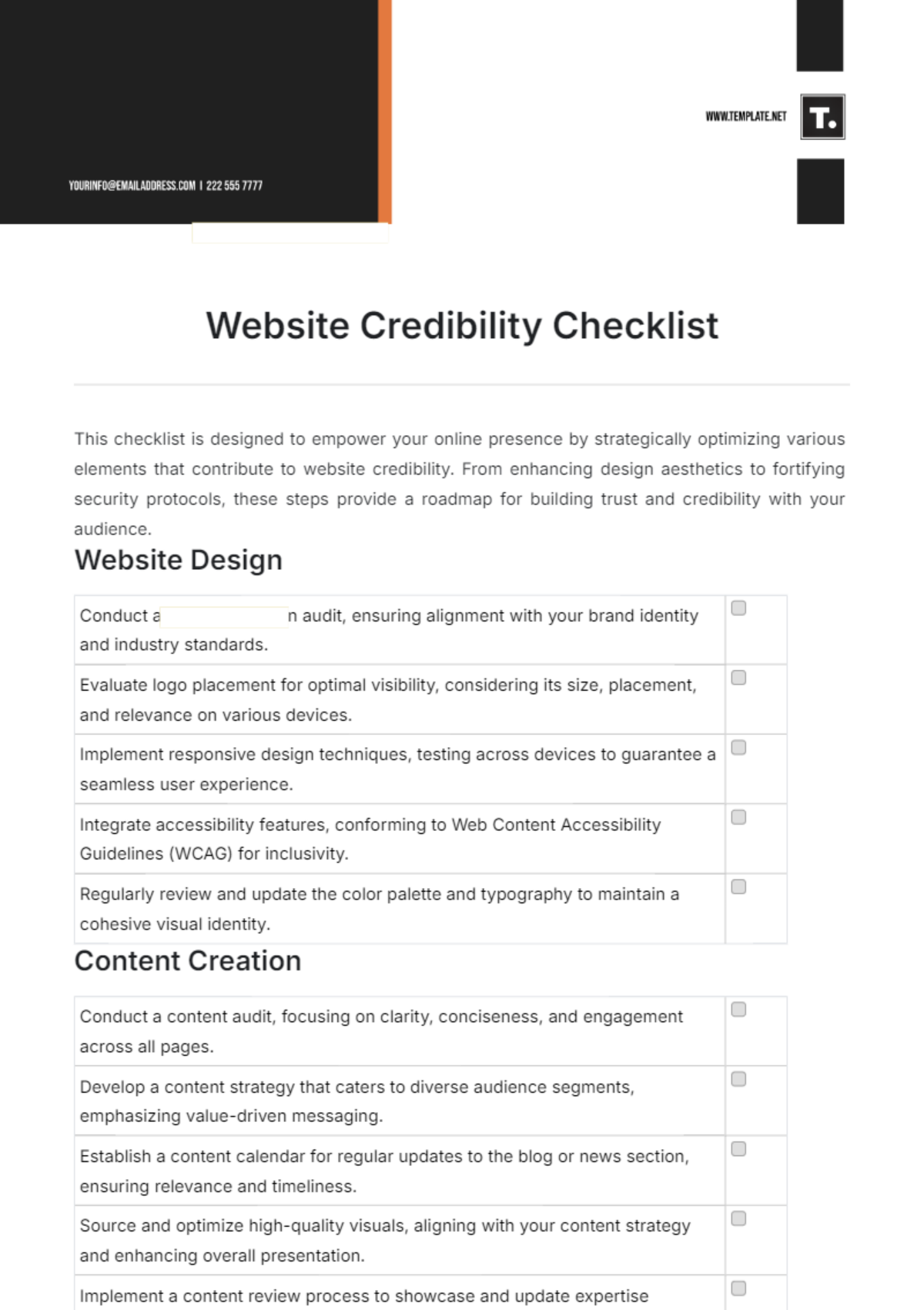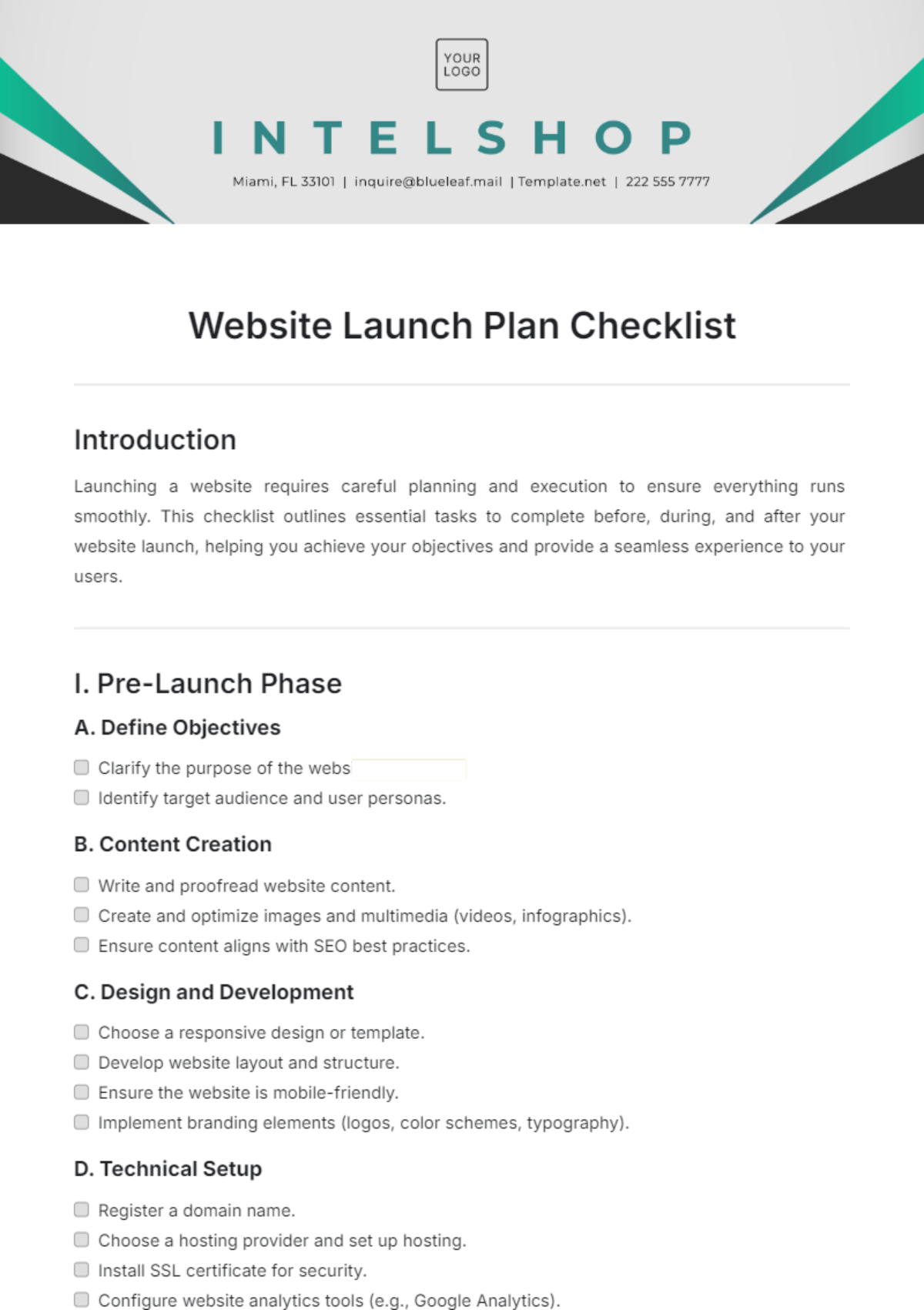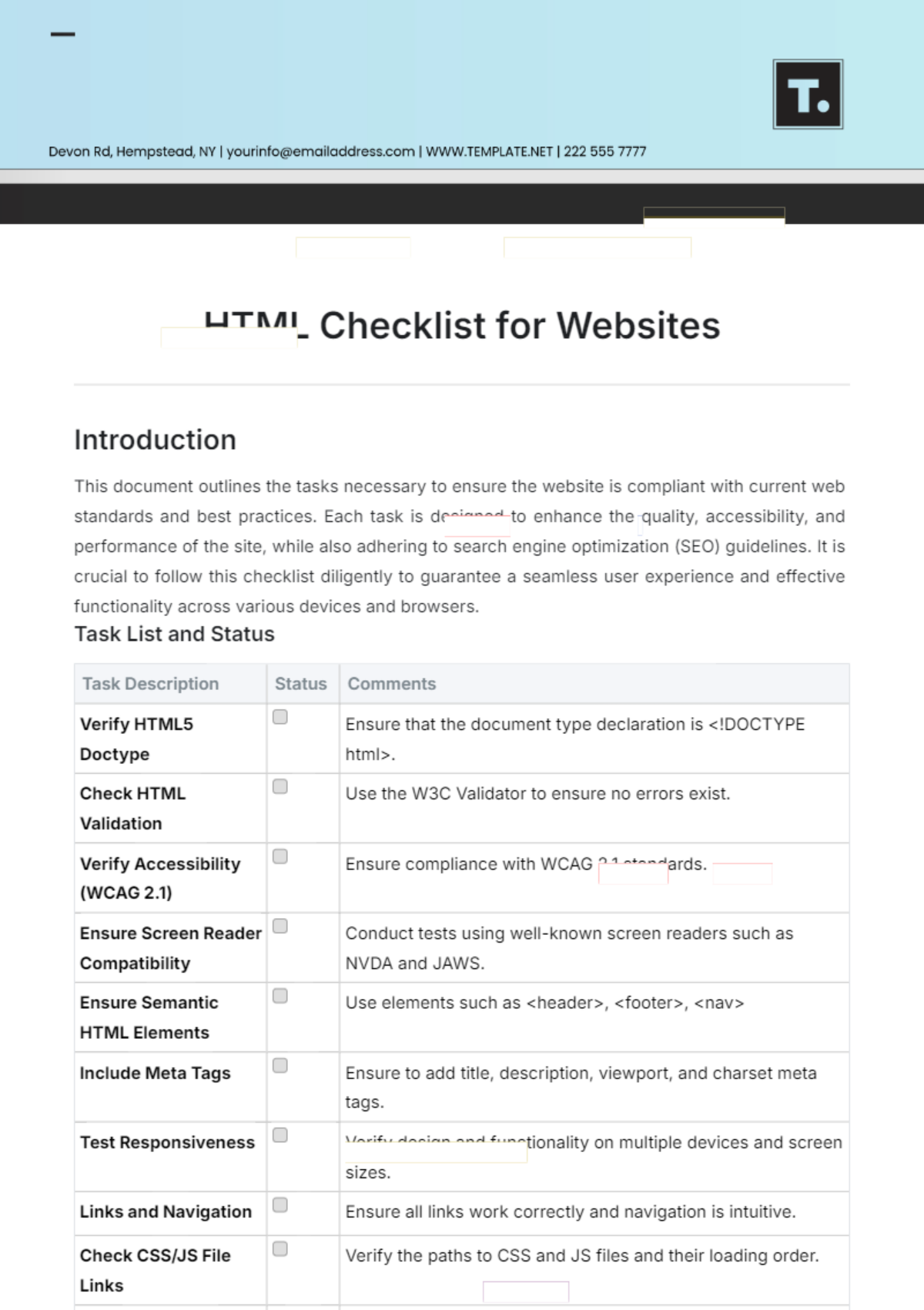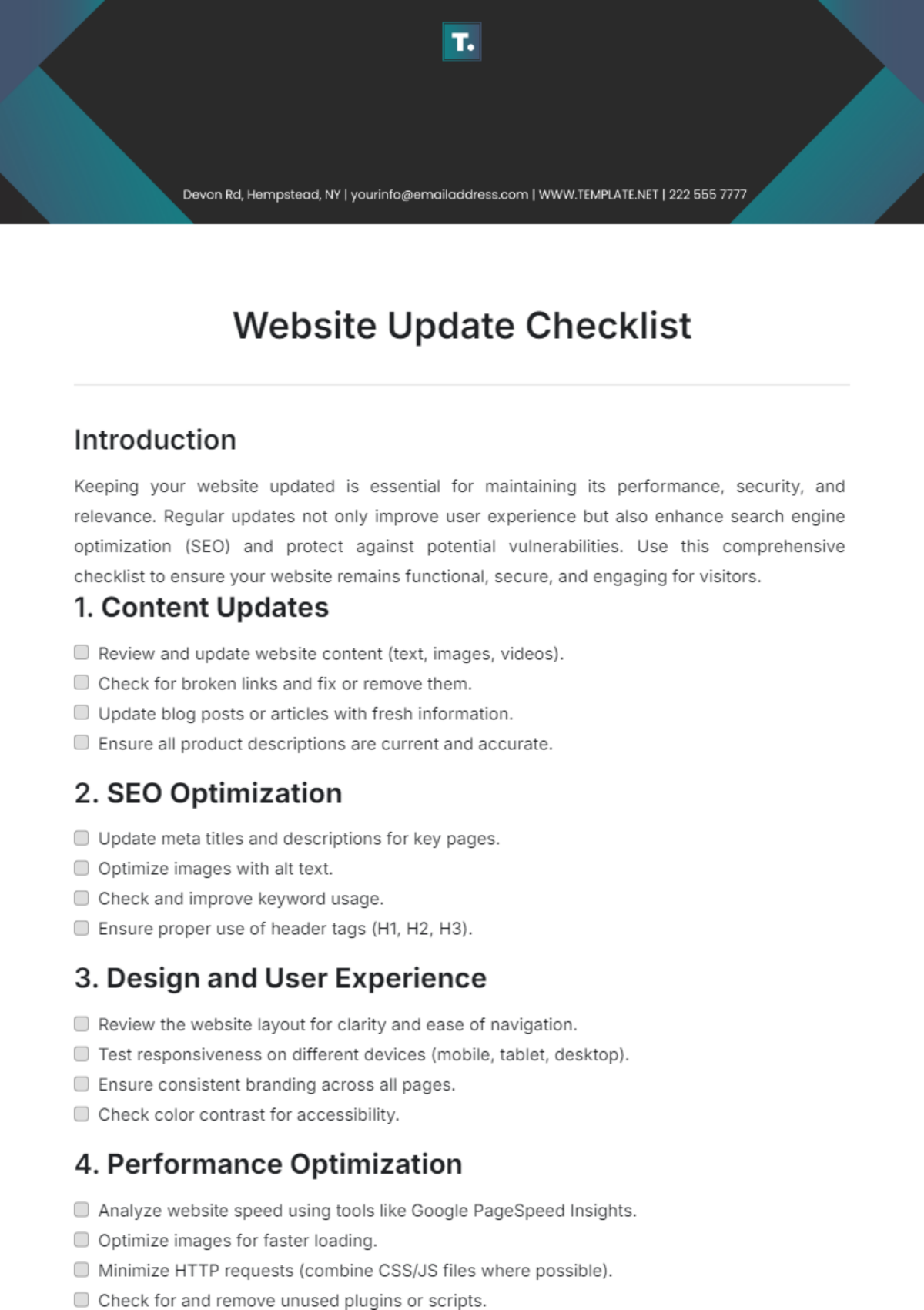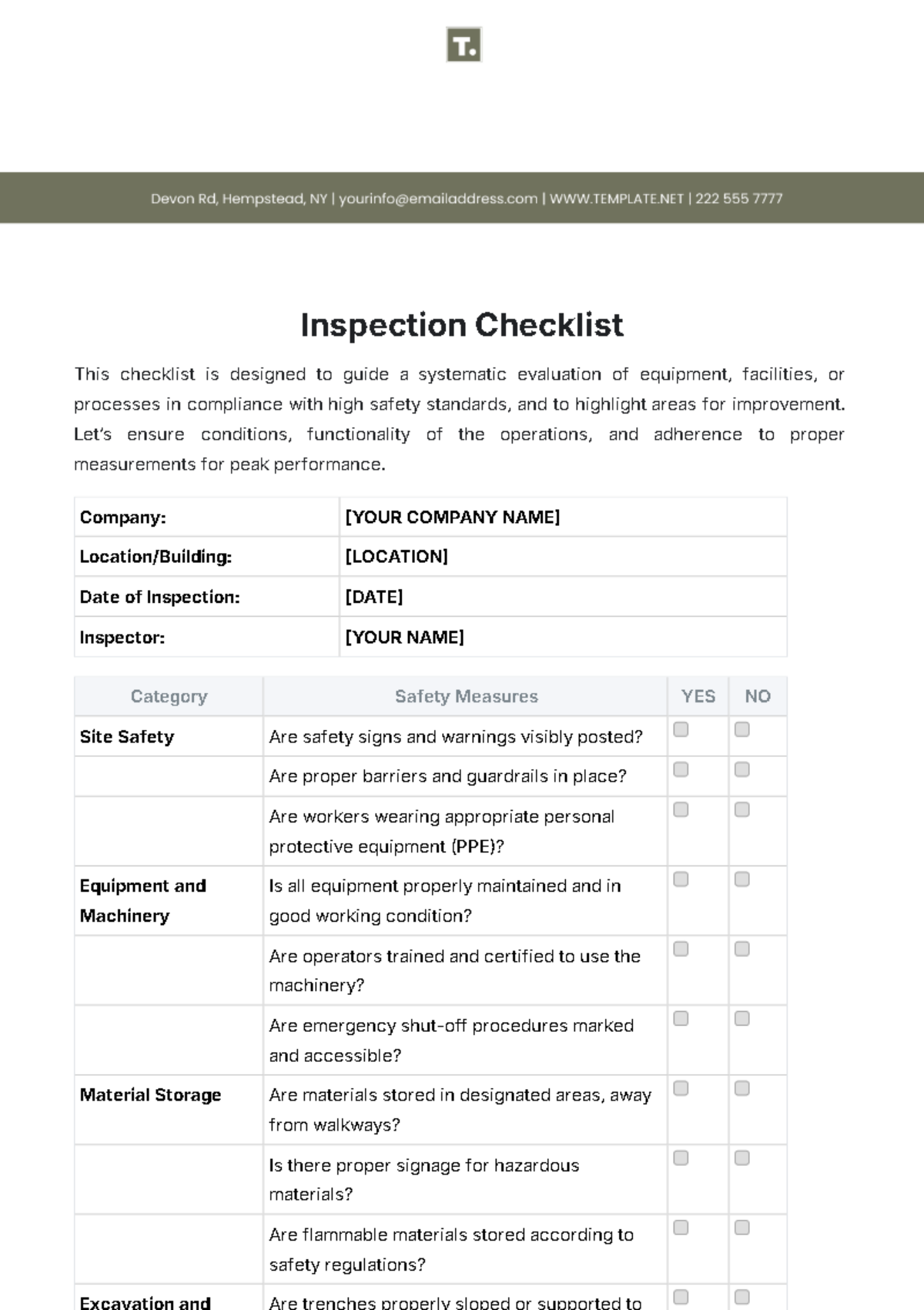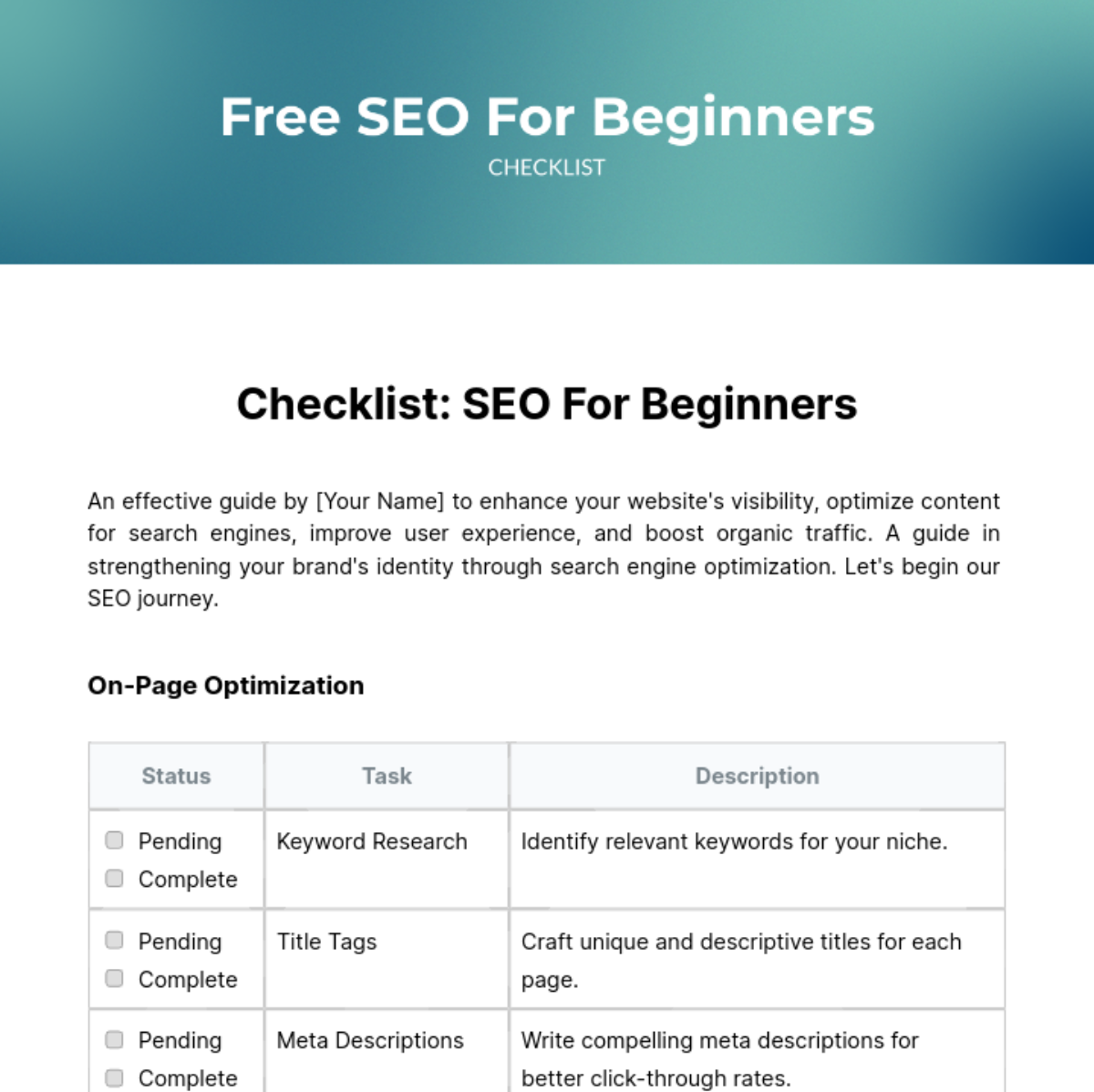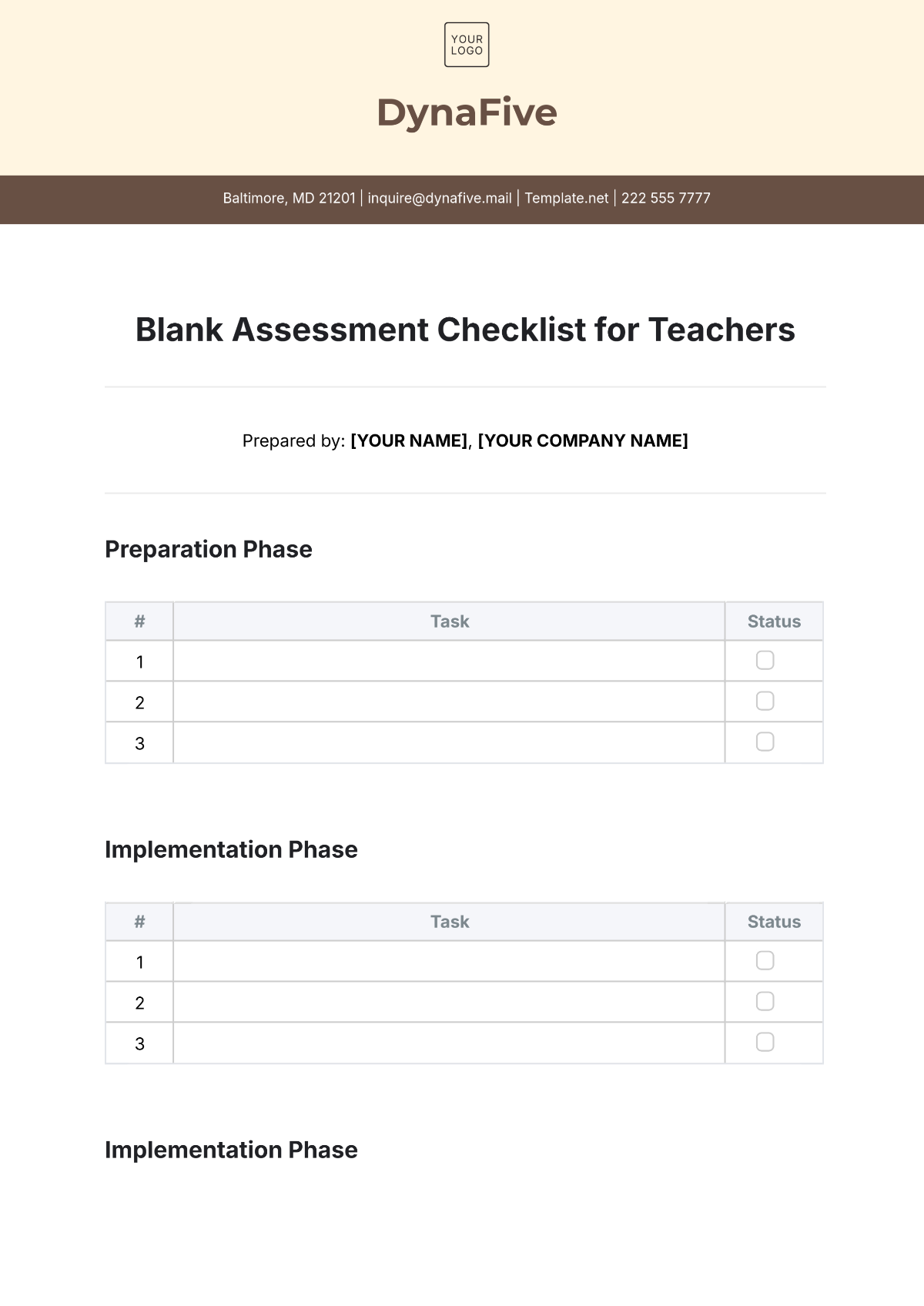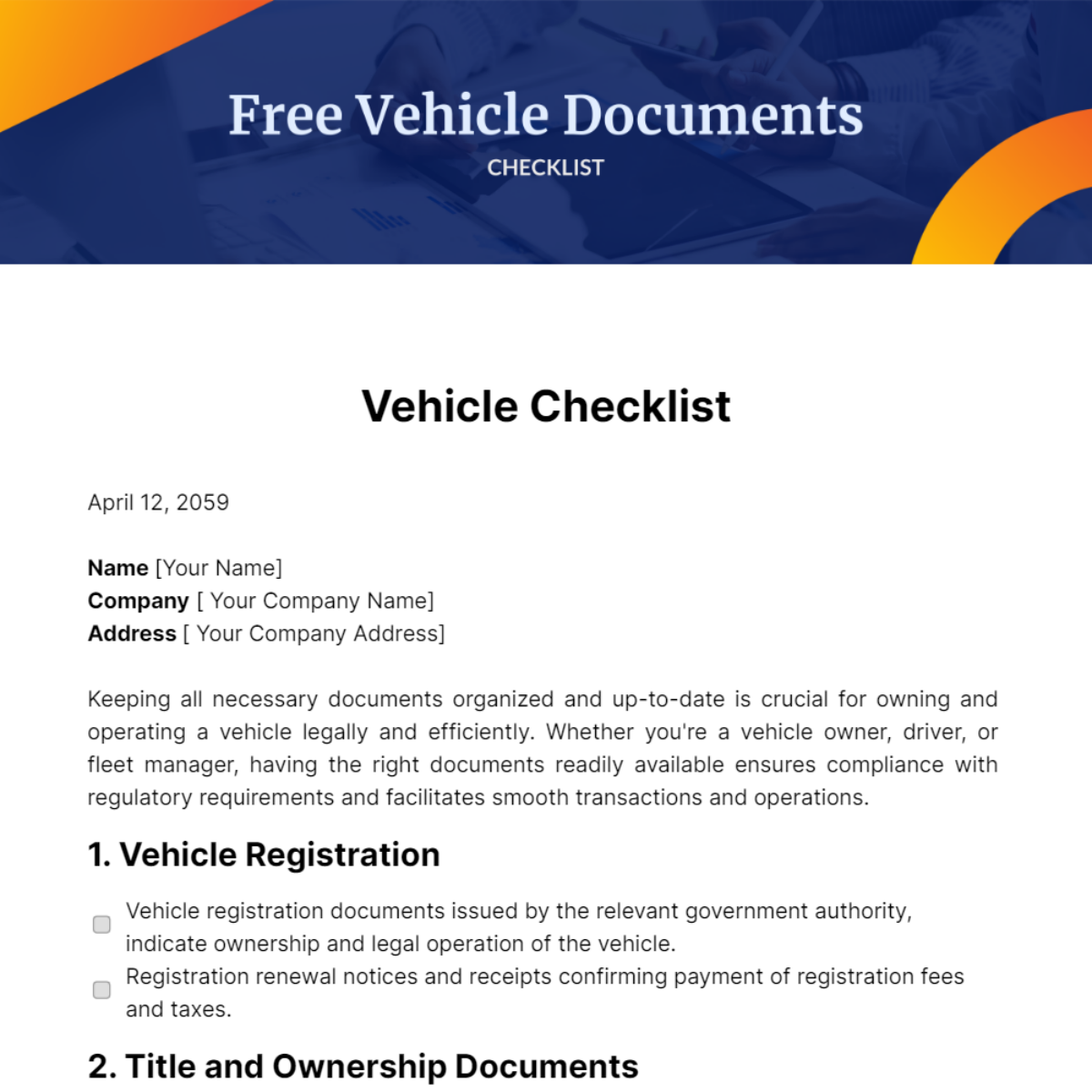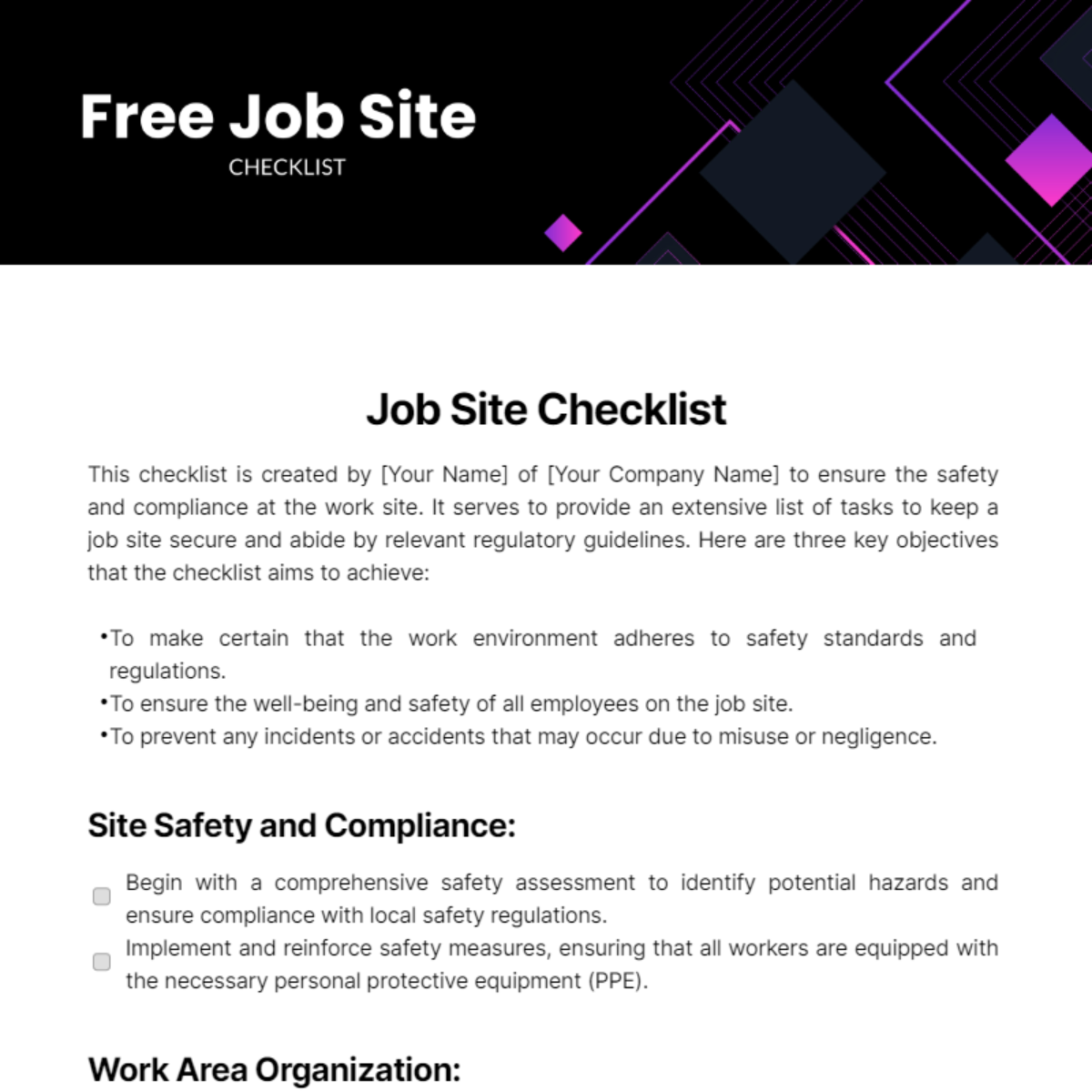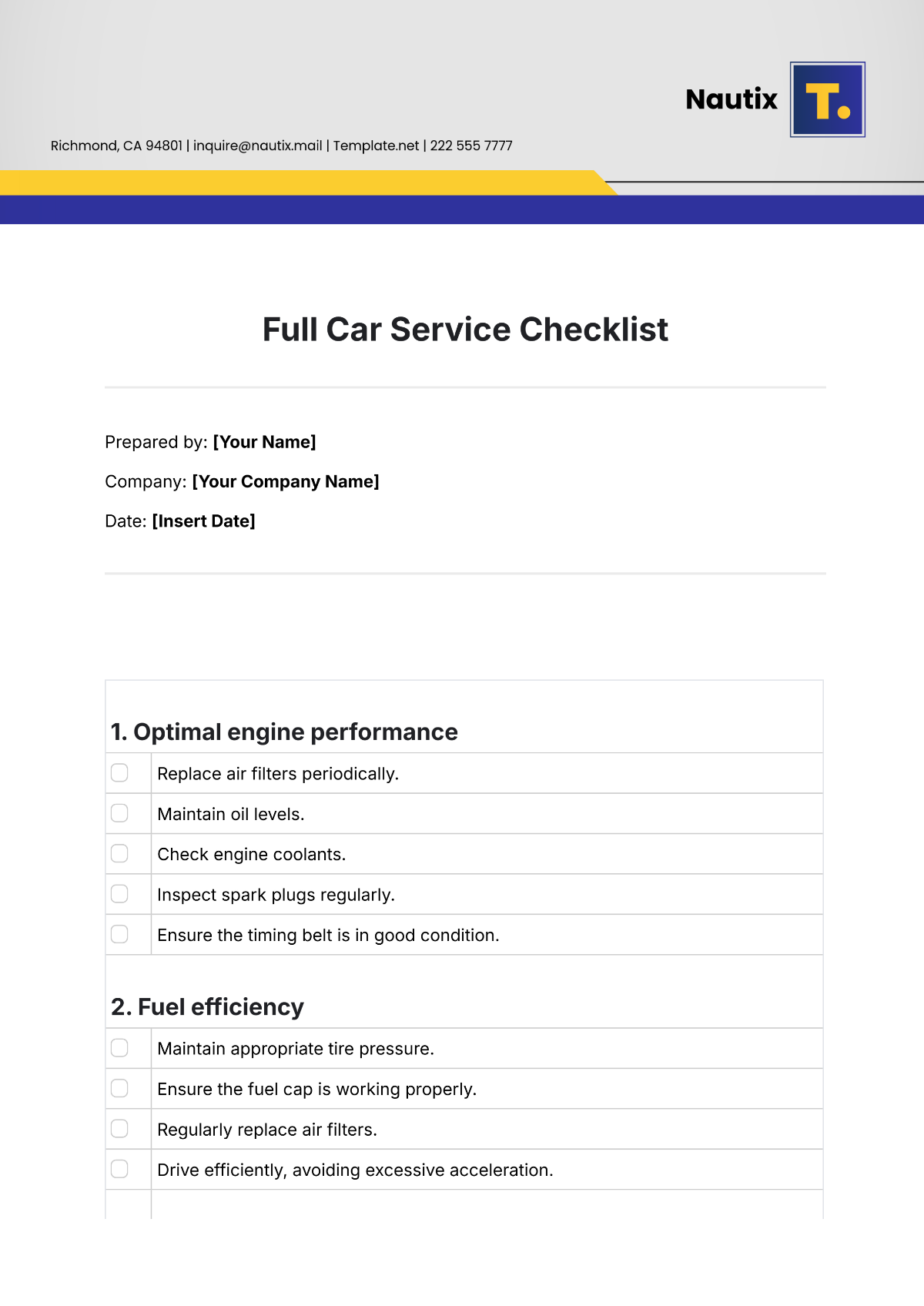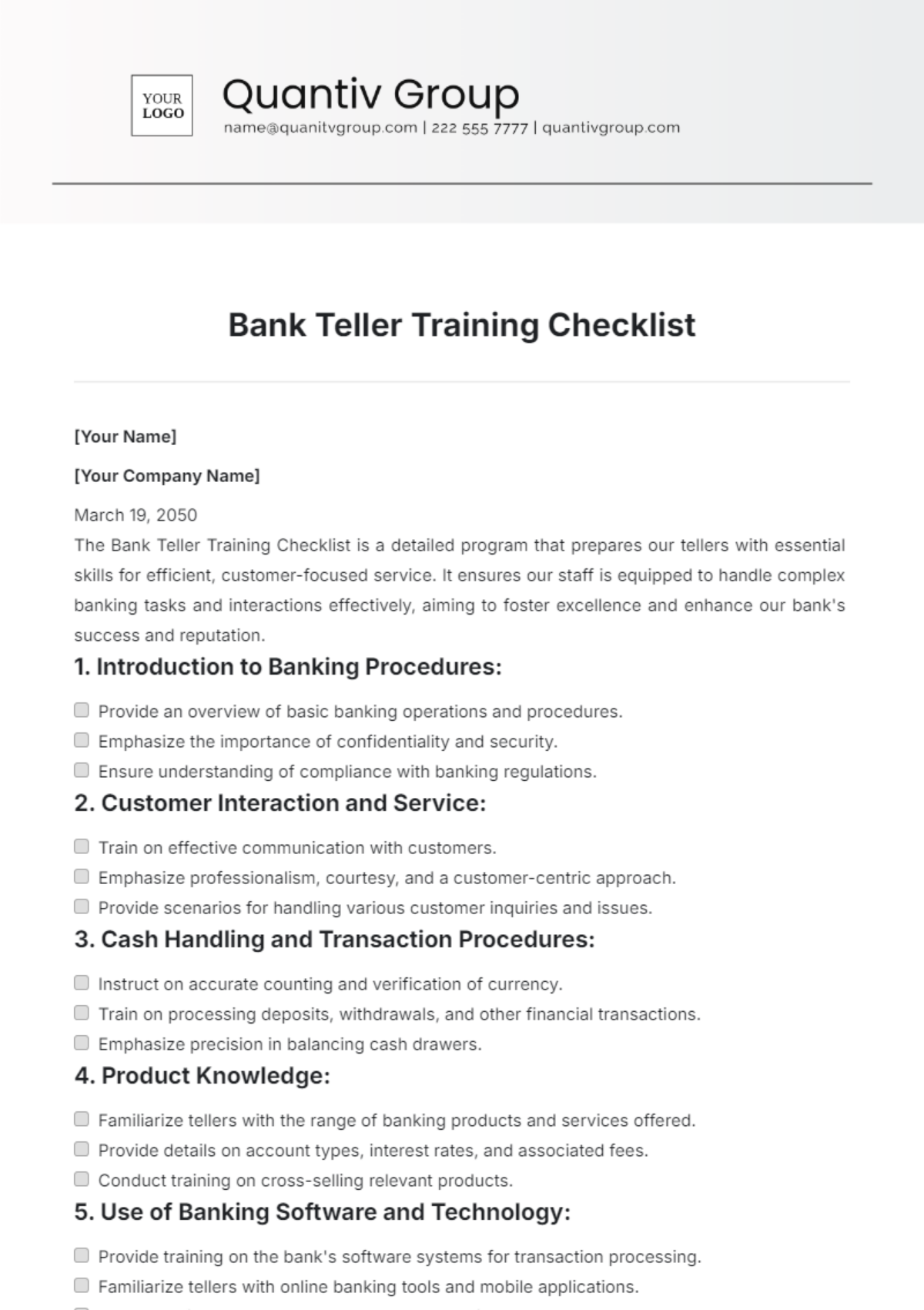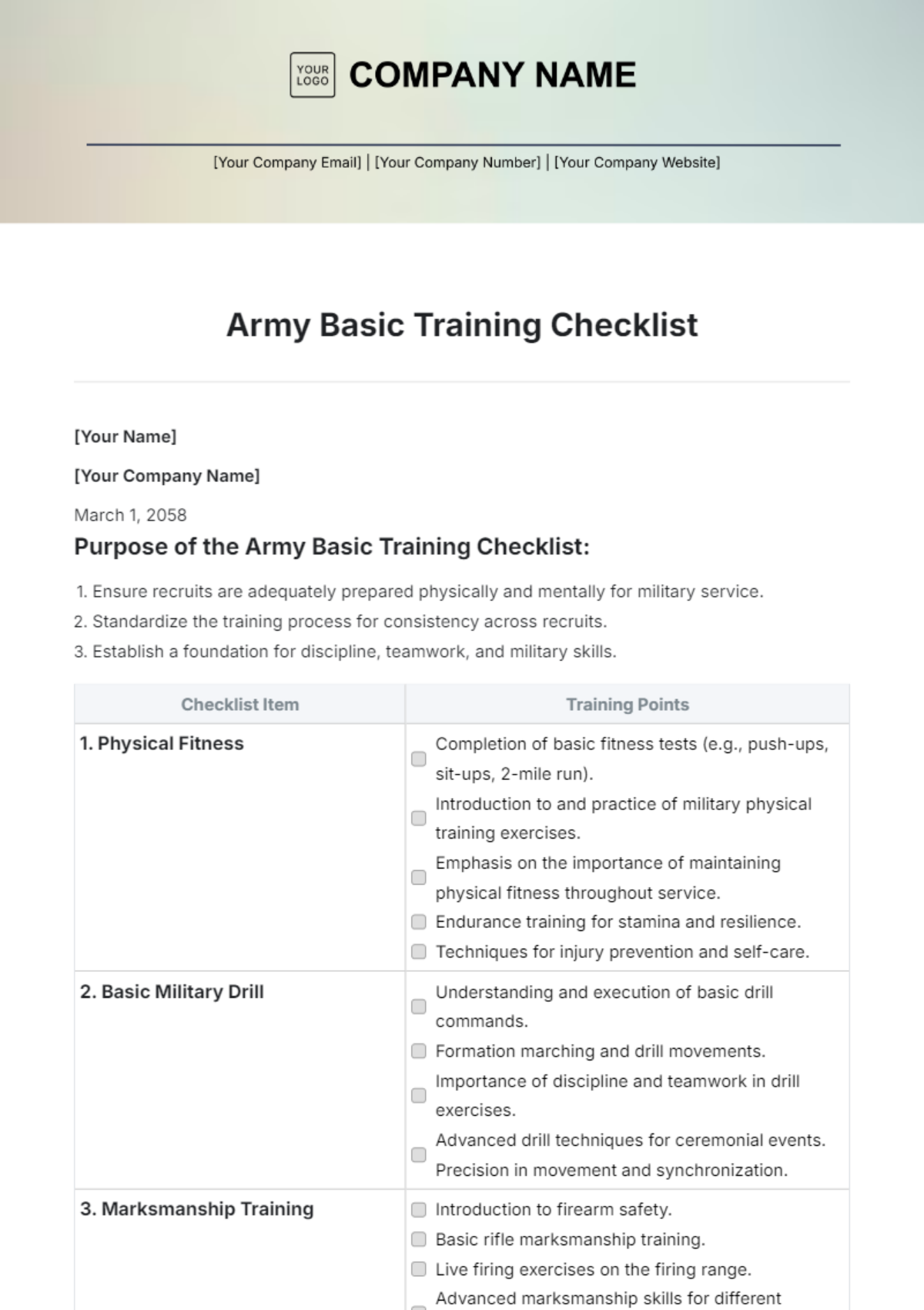Website Launch Checklist
I. Pre-Launch Preparation
Project Planning
Define goals and objectives
Confirm target audience and user personas
Review and approve design and functionality
Domain and Hosting
Purchase and register domain name
Set up web hosting account
Configure DNS settings
II. Content and Design
Content Review
Proofread all text for spelling and grammar
Ensure all content is accurate and up-to-date
Verify that images, videos, and other media are optimized
Design Consistency
Check for consistent branding (colors, fonts, logo)
Ensure design elements align with user experience goals
Validate that all design elements are responsive
III. Functionality Testing
Browser Compatibility
Test website on major browsers (Chrome, Firefox, Safari, Edge)
Verify functionality across different devices (desktop, tablet, mobile)
Forms and Interactive Elements
Test all forms for proper functionality (submission, validation)
Ensure interactive elements (buttons, sliders) work as intended
IV. Performance and Optimization
Page Speed
Optimize images and other media files
Minify CSS and JavaScript files
Test website load times and address performance issues
SEO Readiness
Confirm proper use of meta tags (title, description)
Check for broken links and fix them
Ensure website is indexed by search engines
V. Security and Backup
SSL Certificate
Install and configure SSL certificate
Verify that HTTPS is properly enforced
Backup
Set up automatic backups
Ensure that backups are stored securely and can be restored if needed
VI. Launch
Final Checks
Conduct a final review of all website pages
Verify that all content is displayed correctly
Ensure all features and functions are operational
Go Live
Publish website and update DNS settings
Monitor website performance and user feedback
VII. Post-Launch
Monitor and Analyze
Set up website analytics (Google Analytics, etc.)
Track website traffic, user behavior, and performance
Bug Fixes and Updates
Address any issues that arise post-launch
Implement updates and improvements based on user feedback
